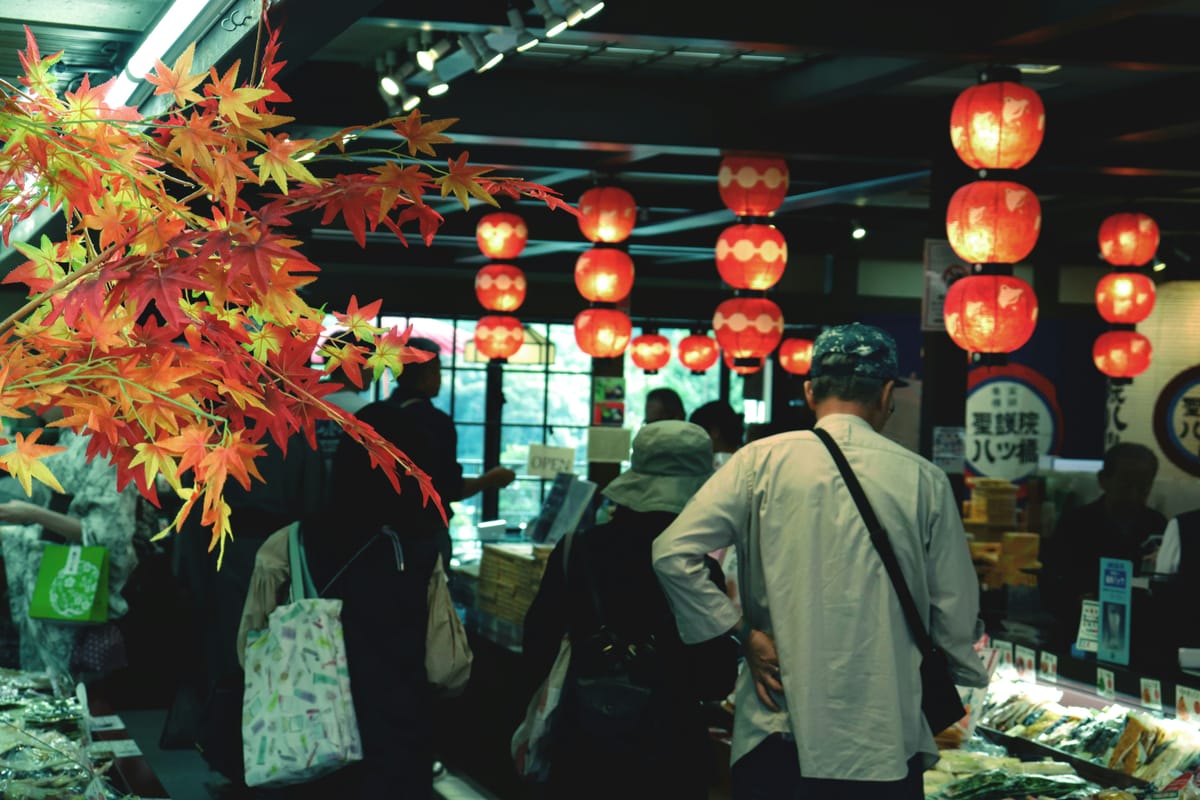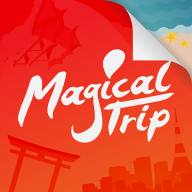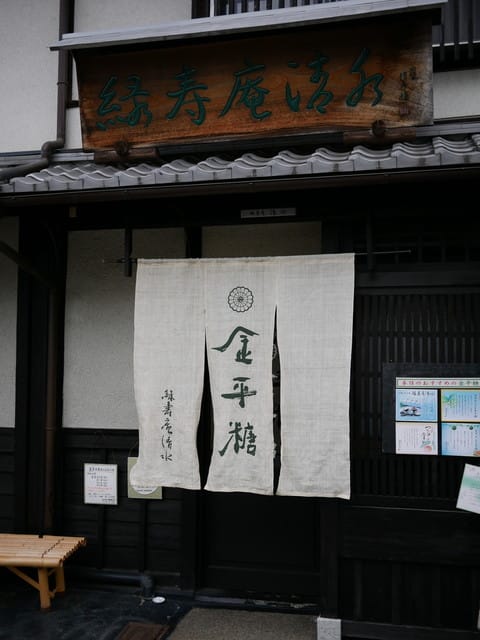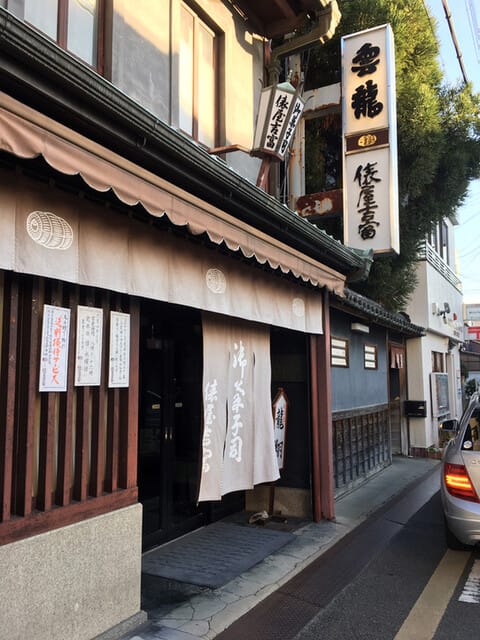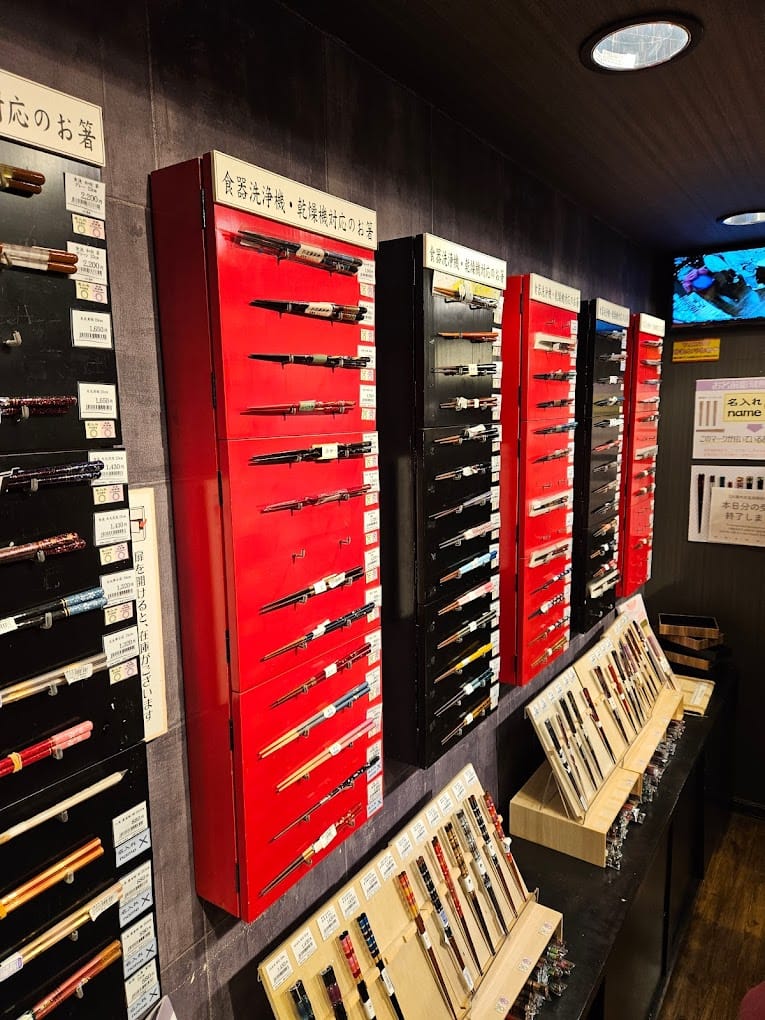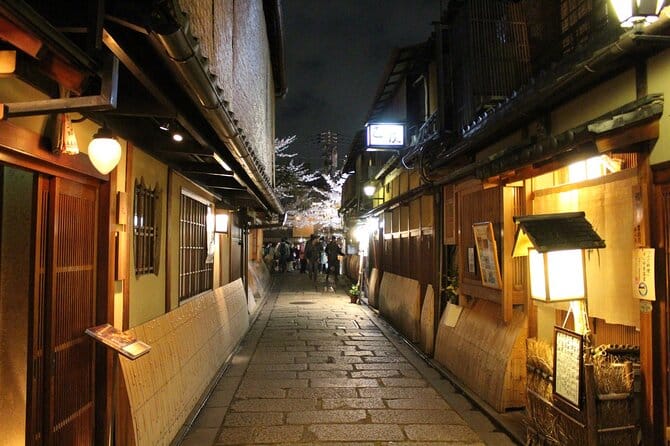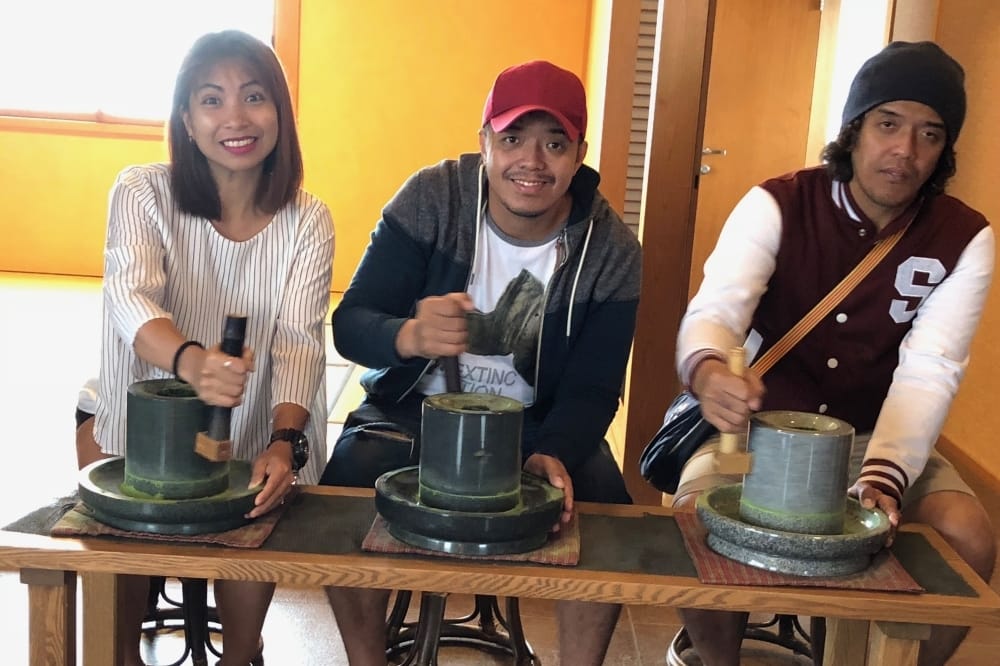Kyoto is like a second home to me, filled with memories from the two years I spent there as a graduate student.
The historical streetscapes, the beauty of nature changing with the seasons, and the unique food culture - I was captivated by Kyoto's charms. While pursuing my studies, I spent my free days exploring various parts of the city.
I vividly remember the overwhelming sight of torii gates at Fushimi Inari Shrine, discovering delicious street food at Nishiki Market, and experiencing matcha in Uji.
In this article, I'll introduce popular tourist spots, seasonal attractions, and tips for enjoying Kyoto, drawing from the knowledge and experiences I gained while living there. I hope to bring the allure of Kyoto closer to those who've been thinking, "I'd like to visit someday."
Everyone has their own reasons for choosing Kyoto as a travel destination, but I believe many are drawn to the unique atmosphere and culture of this traditional city. I'll try to convey Kyoto's charm from my perspective.
I hope that readers will get a sense of the Kyoto I experienced and find this guide useful for their own Kyoto trip!
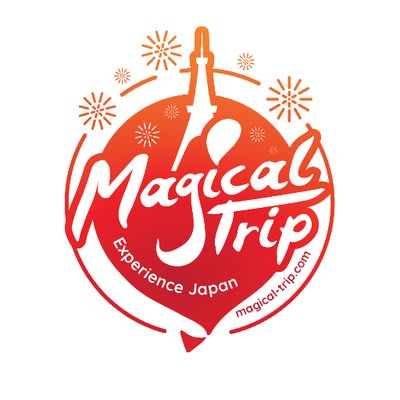
Table of Contents
・3 Reasons Why Kyoto is Popular
・Where Should You Stay in Kyoto?
・Recommended Areas and Spots for Travelers in Kyoto
・How to Enjoy Kyoto in Each Season
・About Kyoto's Food Culture
・Recommended Souvenir Shops in Kyoto
・Tours to Fully Enjoy Kyoto
・Tips for Kyoto Sightseeing
3 Reasons Why Kyoto is Popular
There are three main reasons why Kyoto attracts so many tourists from both Japan and abroad. The beauty of its historical townscape, the richness of its traditional food culture, and the stunning scenery where nature and history blend seamlessly. During my two years in Kyoto, I thoroughly enjoyed all of these charms.
Preserved Historical Townscape
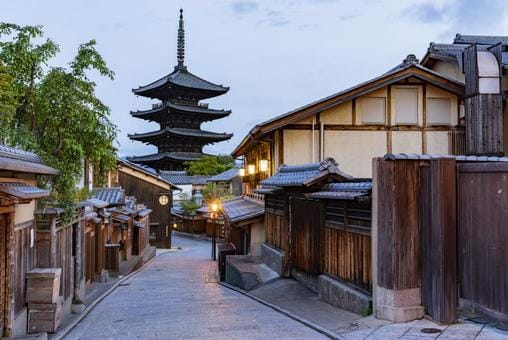
Kyoto is an ancient capital with over 1200 years of history, and the culture and buildings nurtured throughout this long history are still carefully preserved today.
In areas like Gion and Nijo Castle, which strongly retain the atmosphere of the Edo and Heian periods, you can feel as if you've traveled back in time. Exploring the old buildings and temples scattered throughout these areas is one of the great pleasures of visiting Kyoto.
You can see numerous cultural properties registered as World Heritage Sites all over the city.
The unique scenic beauty of Kyoto, where historical buildings blend harmoniously with modern elements, never fails to captivate visitors. I remember making new discoveries every time I walked through Kyoto's streets, even while busy with my studies.
Many Places to Enjoy Traditional Food Culture
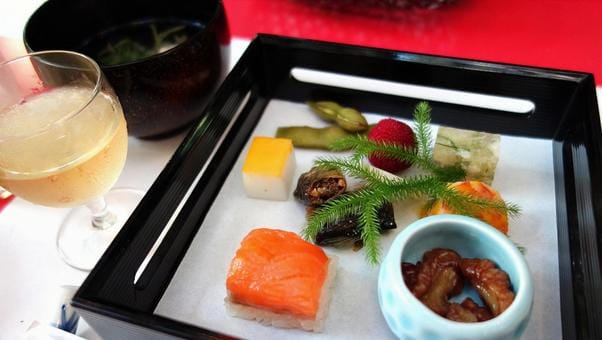
The array of delicate and beautiful dishes known as "Kyoto cuisine" captivates visitors. The refined flavors that make the most of seasonal ingredients are truly exceptional.
On the other hand, homestyle dishes like obanzai are also a big part of Kyoto's food culture charm.
Additionally, traditional sweets like matcha-flavored desserts and yatsuhashi are another culinary delight in Kyoto. From high-end ryotei restaurants to casual eateries, Kyoto offers a wide variety of dining options. During your stay in Kyoto, I recommend trying different types of cuisine.
Abundance of Places Where Nature and History Blend
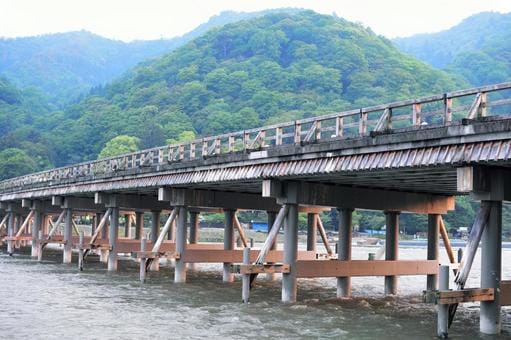
Kyoto's appeal isn't limited to its culture nurtured by its long history. There are also many spots where you can enjoy the beauty of nature, such as the walking paths along the Kamogawa River and the bamboo groves of Arashiyama.
The scenery where such natural beauty harmonizes perfectly with historical buildings like shrines and temples is a unique charm of Kyoto.
There are also many famous spots for cherry blossoms and autumn leaves, making Kyoto breathtakingly beautiful in spring and autumn. Gardens and parks that show different expressions with each season are scattered throughout the city.
Spending time in these places allows you to feel a sense of unity with nature and peace of mind. Such moments of tranquility are one of my precious memories from my student life in Kyoto.
Where Should You Stay in Kyoto?
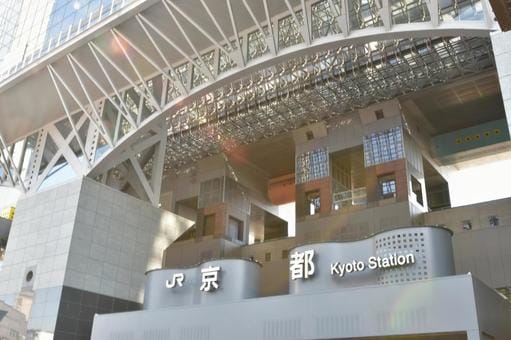
When visiting Kyoto, choosing where to stay is a crucial point that greatly affects your travel satisfaction. The area around Kyoto Station is convenient for transportation and popular among many tourists, but surprisingly, it doesn't have many tourist attractions and can feel less authentically "Kyoto."
From my experience living in Kyoto, I recommend staying around Gion-Shijo Station on the Keihan Line or Kawaramachi Station on the Hankyu Line if you want to fully enjoy Kyoto sightseeing.
The location is very attractive, within walking distance of famous temples and shrines like Kiyomizu-dera. It's also easy to access popular spots like Arashiyama, Fushimi Inari, and Uji by train.
There's a wide range of hotel options, from budget-friendly accommodations to luxury hotels, so you can choose based on your budget and preferences. This area is better equipped for tourism than the Kyoto Station area. For your first trip to Kyoto, I highly recommend basing yourself in this area.
Recommended Areas and Spots for Travelers in Kyoto
Kyoto has countless attractive tourist spots, but I've picked out a few areas and places that I particularly recommend for foreign travelers.
Considering the beauty of the scenery, historical value, and ease of access, here are my top recommendations from the perspective of a Kyoto insider.
3 Zones to Visit on Your First Trip to Kyoto
When visiting Kyoto for the first time, there are three essential tourist zones you should explore.
These are all famous areas representing Kyoto, filled with spots that capture the essence of the city's charm. If you want to enjoy Kyoto efficiently in limited time, you can't miss these three zones.
Gion Area
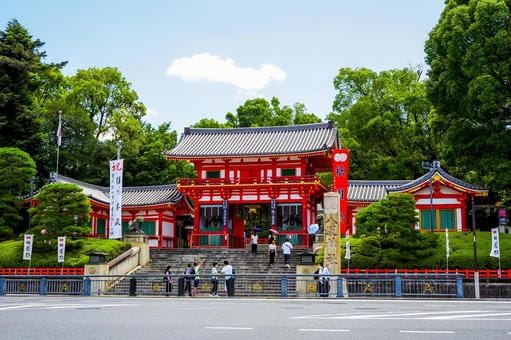
The Gion area is home to Kyoto's most iconic tourist spots. It includes Hanamikoji Street, famous for sightings of maiko and geisha, Yasaka Shrine, and Pontocho - areas that truly encapsulate the atmosphere of Kyoto. If you're visiting Kyoto, this area is an absolute must-see.
I visited the streets of Gion many times during my student days. Why not try walking along the stone-paved alleys and experience the charm of old Japan?
If you are interested in Gion, check the article below! I summarized how and where you can enjoy Gion as much as possible.

Arashiyama Area
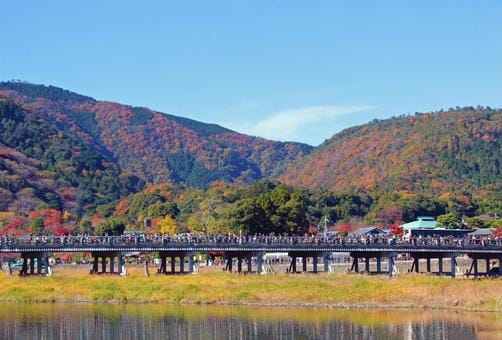
The Arashiyama area is where you can enjoy the fusion of Kyoto's natural beauty and historical landscapes. It's home to scenic spots that show beautiful expressions in every season, including the bamboo grove path, Togetsukyo Bridge, and Tenryu-ji Temple. The autumn foliage season is particularly spectacular.
During my graduate school days, I often visited Arashiyama when I hit a wall in writing my thesis. Healing my heart with the beauty of nature while contemplating the depth of history - I feel that's the charm of Arashiyama.
It's a place where you can refresh both body and mind, so I recommend visiting during your Kyoto trip.
If you are interested in Arashiyama, check the article below! I summarized how and where you can enjoy Arashiyama as much as possible.
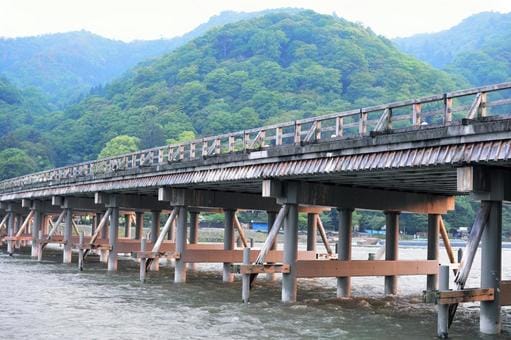
Fushimi Area

The Fushimi area, located in southern Kyoto, is known for its super popular tourist spot, Fushimi Inari Shrine. The mystical scenery created by thousands of torii gates is breathtaking. Fushimi is also famous as a sake production area, and you can enjoy sake brewery tours.
However, there's quite a distance between the Fushimi Inari Shrine area and the sake brewery area, so you need to plan carefully to visit both efficiently.
I recommend first thoroughly enjoying Fushimi Inari Shrine, then exploring the sake breweries. It will be a special day where you can feel the history and sake culture of Fushimi.
If you are interested in Fushimi, check the article below! I summarized how and where you can enjoy Fushimi as much as possible.
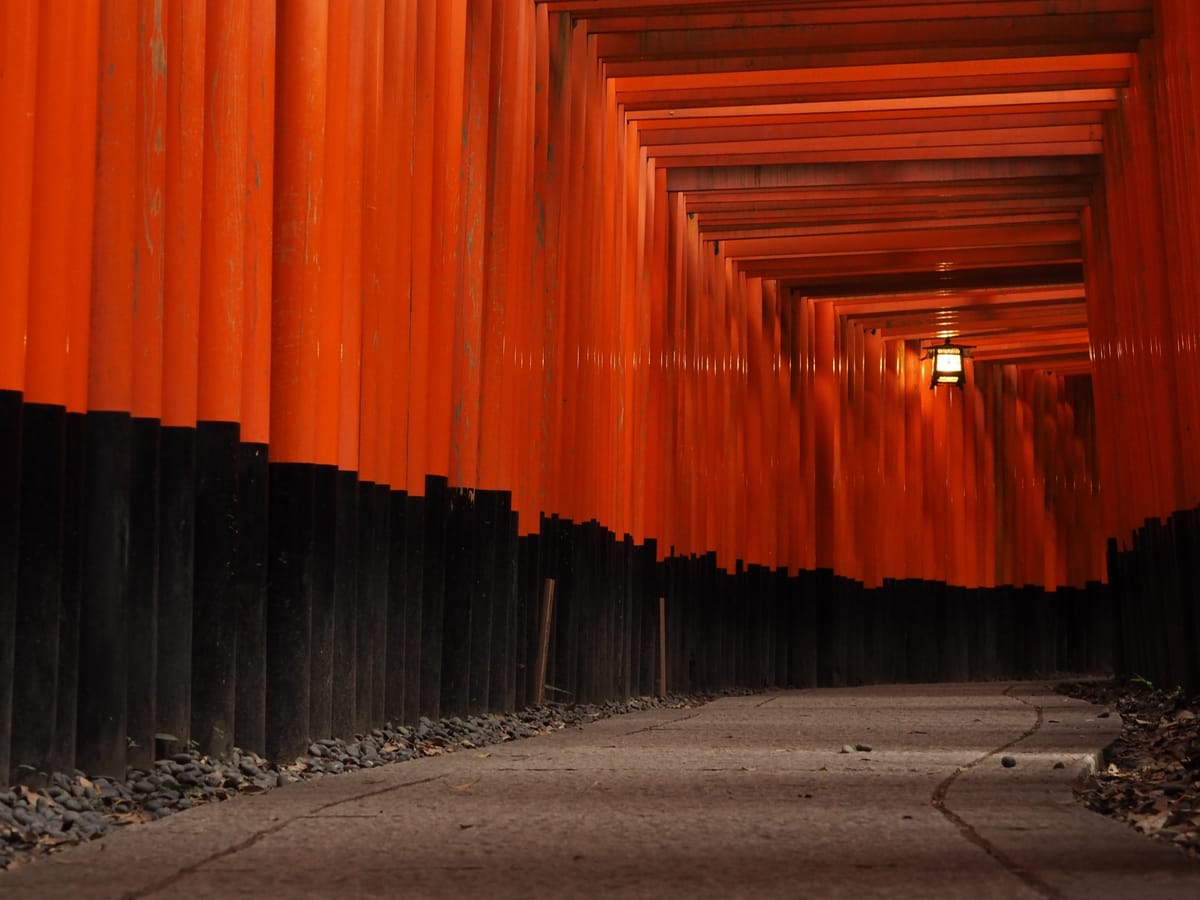
6 Must-Visit Areas and Spots
The six spots introduced here are must-see places in Kyoto. These are all famous locations representing Kyoto, and most of them are in the Gion area I mentioned earlier. Visiting these will greatly enhance your Kyoto sightseeing experience.
Gion Hanamikoji Street
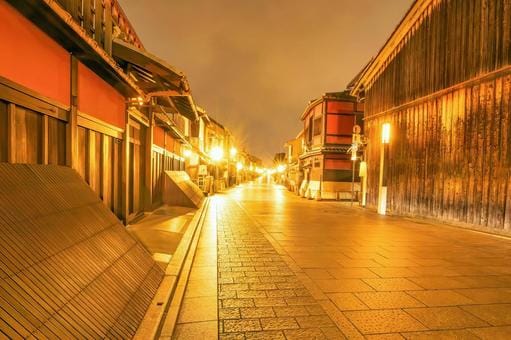
"Hanamikoji Street" in the Gion area I introduced earlier is known as Kyoto's premier geisha district.
The big attraction is the chance to see the elegant figures of geisha and maiko. Just walking along the atmospheric stone-paved street makes you feel like you've traveled back in time. However, be aware that taking photos of them is considered against the rules.
High-class ryotei restaurants line the area around Hanamikoji Street, and their exclusivity makes them difficult to enter even for Japanese people.
If you want to meet maiko, I recommend joining a tour. At night, the light from paper lanterns illuminates the townhouses on Hanamikoji Street, creating a fantastically Kyoto-like atmosphere. Try to compare the faces of the street during day and night.
Access:
About 5 minutes walk from Gion-Shijo Station on the Keihan Line
About 10 minutes walk from Kyoto-Kawaramachi Station on the Hankyu Line
If you are interested in Hanamikoji Street, check the article below! I summarized in more details and how I felt there.
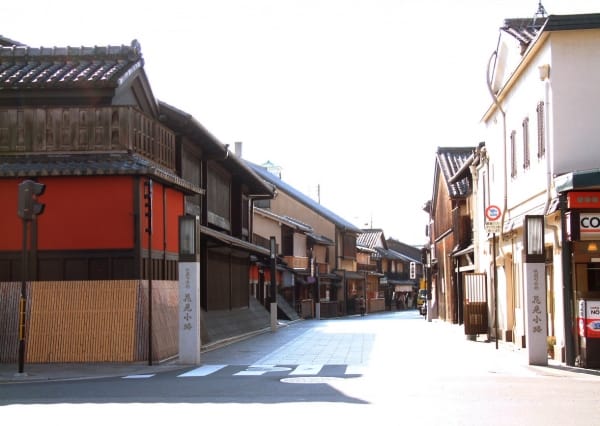
Pontocho
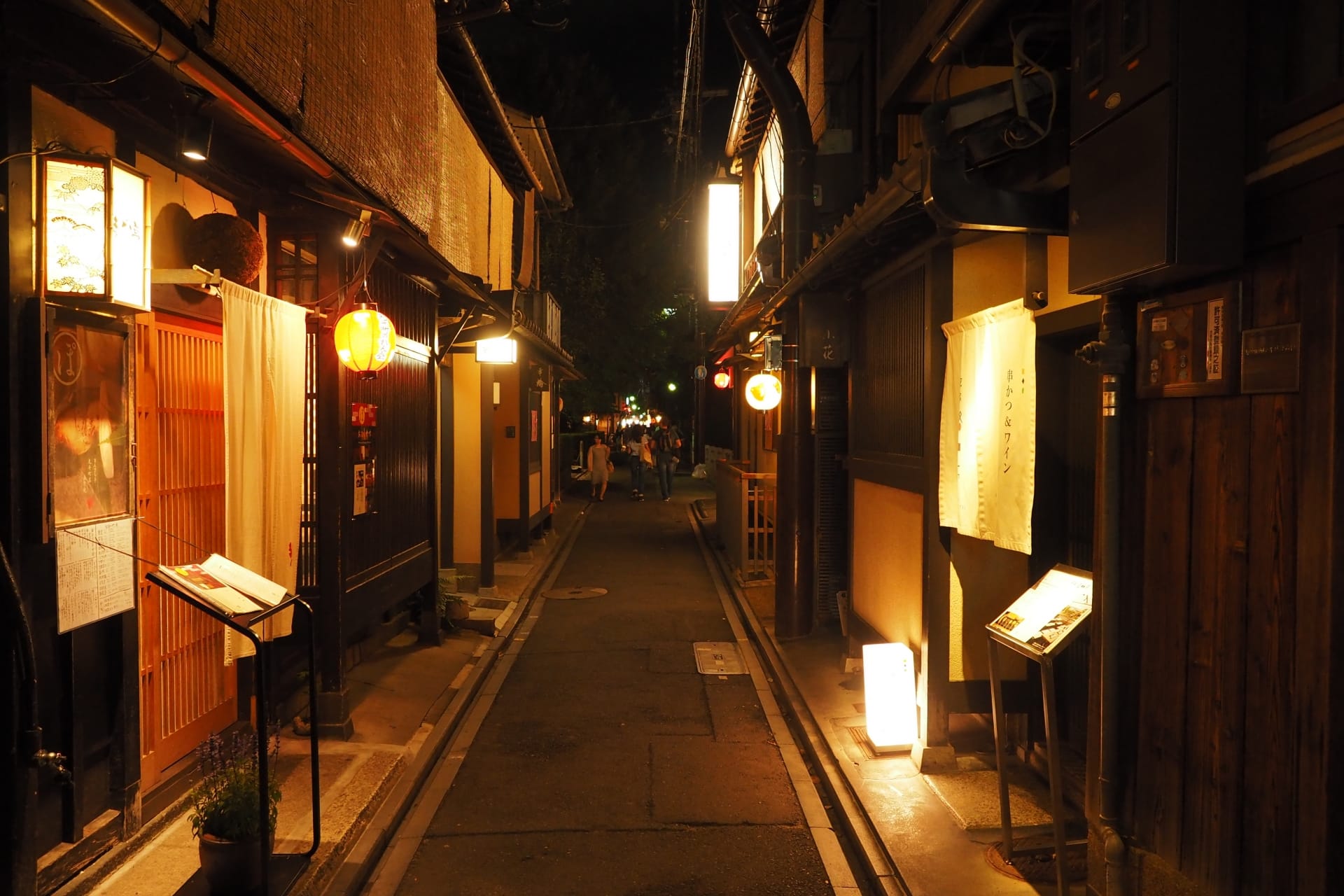
A short walk from Hanamikoji Street, along the Kamogawa River, you'll find another famous street called "Pontocho." The unique scenery of narrow alleys lined with ryotei restaurants and eateries is impressive. The atmosphere at night is especially enchanting, allowing you to enjoy the adult side of Kyoto.
In summer, riverside terraces called "kawayuka" are set up along the Kamogawa River side of Pontocho, where you can enjoy meals while feeling the cool breeze from the river.
I've used these terraces with friends for evening cool-downs, and it was a uniquely Kyoto experience. If you have the chance to visit Pontocho, I recommend trying the kawayuka atmosphere.
Access:
About 5 minutes walk from Gion-Shijo Station on the Keihan Line or Kyoto-Kawaramachi Station on the Hankyu Line
If you are interested in Pontocho, check the article below! I summarized how and where you can enjoy Pontocho as much as possible.
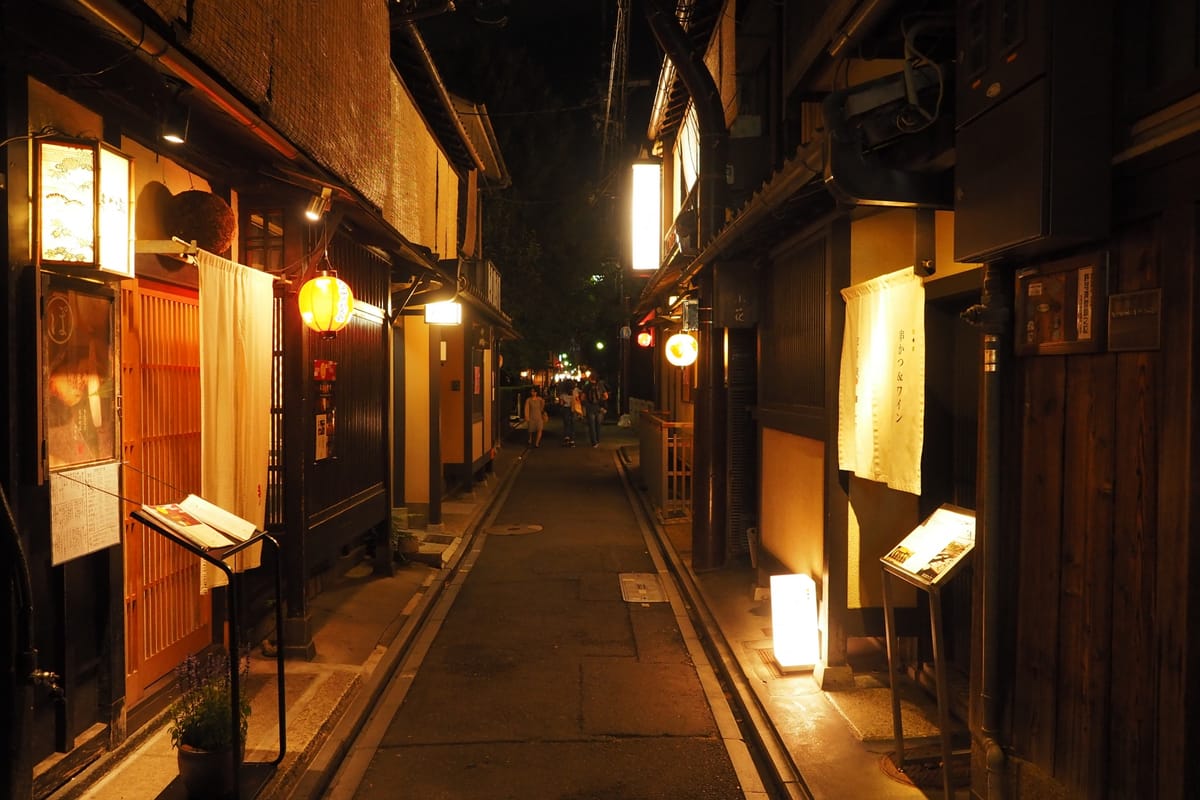
Kiyomizu-dera Temple
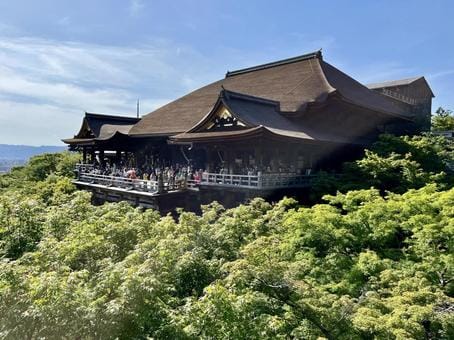
"Kiyomizu-dera Temple" in Higashiyama is one of the most iconic tourist spots in Kyoto. It's known as the place that inspired the famous phrase "to jump off the stage at Kiyomizu," and the view from its stage is one of the best in Kyoto. The scenery is particularly breathtaking during the autumn foliage season.
Kiyomizu-dera is also famous for its "Otowa Waterfall," a sacred spring said to bring benefits in studies and love if you drink from it.
The approach to the temple is lined with souvenir shops and eateries, making it a lively spot for a stroll. However, there are many slopes, so I recommend wearing comfortable shoes.
Access:
About 25 minutes walk from Gion-Shijo Station on the Keihan Line or Kyoto-Kawaramachi Station on the Hankyu Line, via the temple approach
If you are interested in Kiyomizu Dera Temple, check the article below! I summarized in more details and how I felt there.
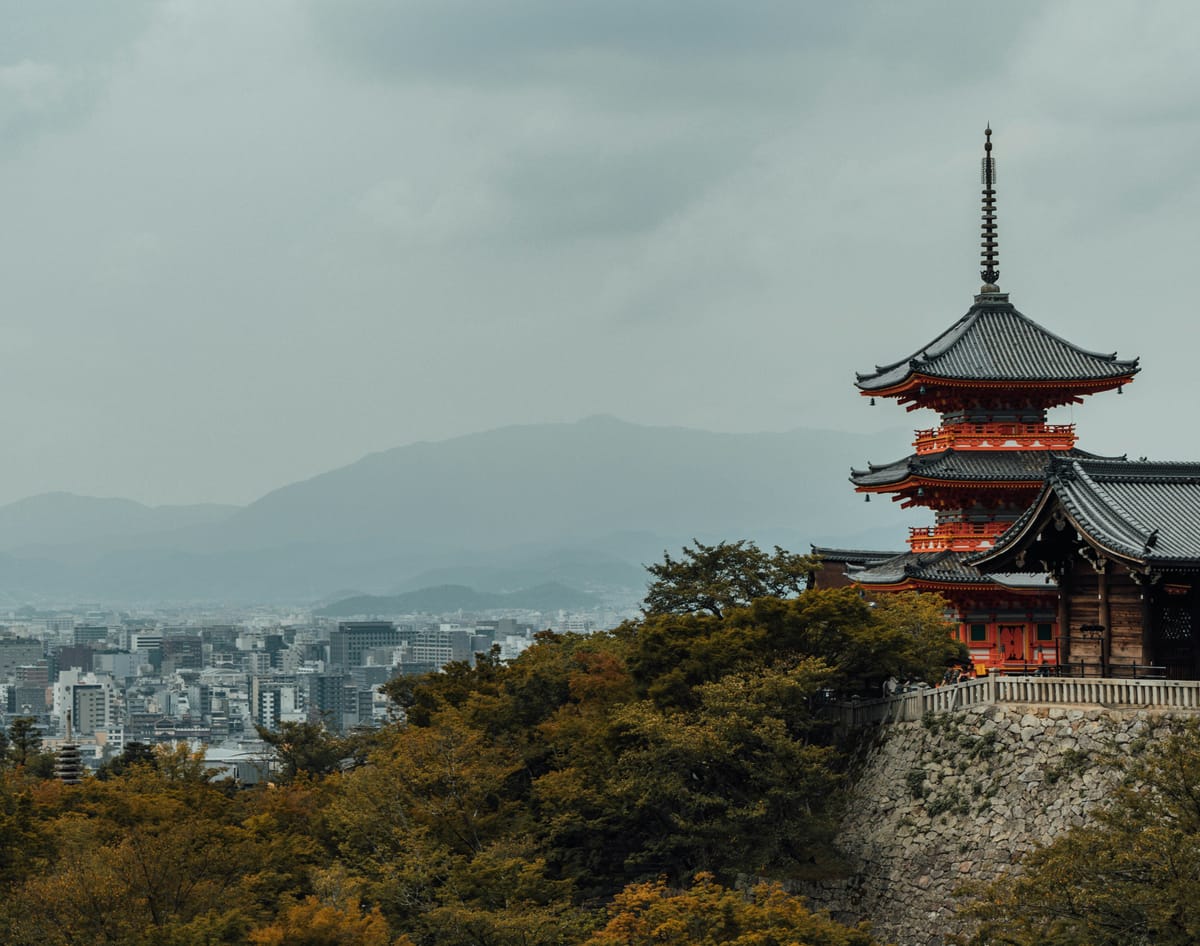
Fushimi Inari Shrine
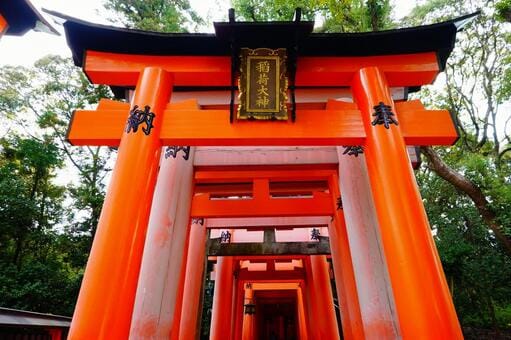
One of the highlights of Kyoto sightseeing is the thousands of vermilion torii gates at Fushimi Inari Shrine. The sight of these gates continuing up to the middle of the mountain is breathtaking. The shrine is open for worship 24 hours a day, and I recommend visiting early in the morning or at night for a more peaceful experience.
Fushimi Inari Shrine is dedicated to the fox deity, and there are many cute fox statues placed around the grounds. As the entire mountain is considered an object of worship, it's also enjoyable to hike up the mountain trails.
The view from the top of the mountain is wonderful, and you can enjoy a satisfying sense of achievement.
Access:
Immediately next to JR Inari Station on the Nara Line
About 5 minutes walk from Fushimi Inari Station on the Keihan Line
Yasaka Shrine and Maruyama Park
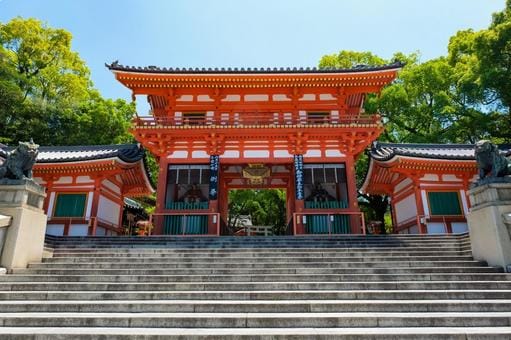
Yasaka Shrine, located in the heart of Gion, is famous as the stage for the Gion Festival. Not only is the shrine grounds beautiful, but the cherry blossoms in the adjacent Maruyama Park are also spectacular. During the cherry blossom viewing season in spring, there's also a nighttime illumination, creating a magical atmosphere.
During my student days, I lived in an area where I could ride my bicycle to Yasaka Shrine, so I used to view the cherry blossoms in Maruyama Park almost daily in spring. When you visit Gion, I highly recommend stopping by here.
Access:
About 5 minutes walk from Gion-Shijo Station on the Keihan Line
About 10 minutes walk from Kyoto-Kawaramachi Station on the Hankyu Line
Nishiki Market
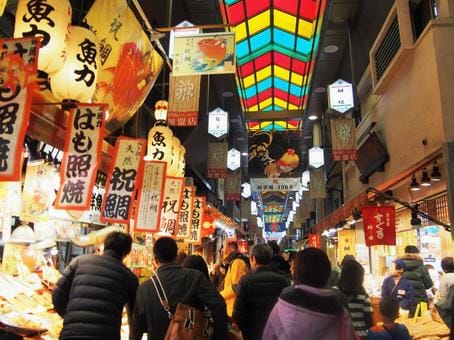
"Nishiki Market," also known as Kyoto's Kitchen, is a lively shopping street filled with food delights. Shops selling fresh seafood, vegetables, and Kyoto-specific ingredients line up side by side, and there's also an abundance of street food to try. The bustling atmosphere, attracting everyone from local housewives to tourists, is characteristic of a market.
It's not just for sightseeing; you can also get a glimpse of local people's daily lives. As a place where you can experience Kyoto's food culture firsthand, I highly recommend visiting.
Access:
About 5 minutes walk from Kyoto-Kawaramachi Station on the Hankyu Line
About 10 minutes walk from Gion-Shijo Station on the Keihan Line
If you are interested in Nishiki Market, check the article below! I summarized how and where you can enjoy Nishiki Market as much as possible.
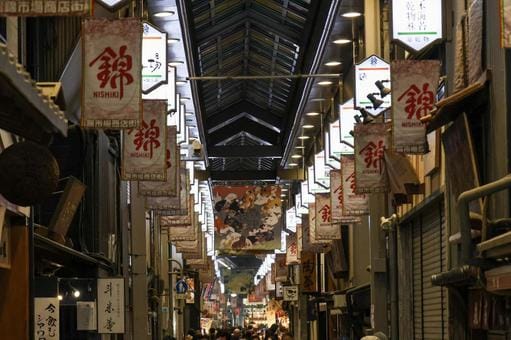
4 Areas and Spots Recommended for Deeply Experiencing Kyoto's History
When it comes to Kyoto, one of its biggest attractions is the abundance of cultural heritage nurtured by its long history. I've carefully selected four spots where you can feel the depth of this history.
While some of these places may be outside the essential areas, they are all famous landmarks in Kyoto sightseeing. By taking your time to visit these places, you'll be able to immerse yourself in the history of Kyoto, the ancient capital.
Kyoto Imperial Palace
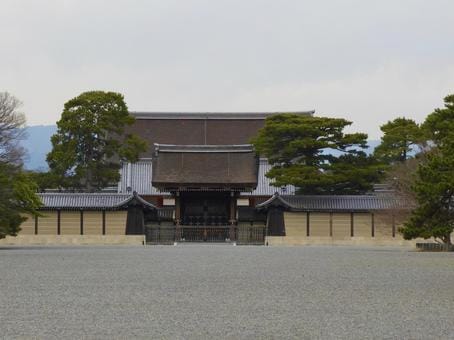
The Kyoto Imperial Palace (officially called Kyoto Gyoen), which was once used as the residence of the Emperor, is a historically significant place with items related to successive emperors and beautiful gardens.
Locals in Kyoto simply call it "Gosho." The vast grounds are full of attractions, and you can't help but feel the weight of history.
It's also famous as a cherry blossom viewing spot in spring and serves as a place of relaxation for citizens. I often visited here to refresh my mind when I was struggling with writing my thesis.
Access:
5 minutes walk from Imadegawa Station on the Karasuma Subway Line or Jingu-Marutamachi Station on the Keihan Line
Heian Shrine

Heian Shrine, built to commemorate the 1100th anniversary of the capital's relocation to Heian-kyo (present-day Kyoto) during the Meiji era, is characterized by its large vermilion torii gate. The beautiful shrine garden within the grounds is a must-see, offering stunning natural beauty with cherry blossoms in spring and autumn leaves in fall.
I visited here on a date during my student days, and just walking through the vast grounds gave me a strange feeling of being separated from everyday life. I think it's the perfect place to feel the history of the ancient capital. It's also popular as an Instagram-worthy spot, so why not pay a visit?
Access:
About 10 minutes walk from Higashiyama Station on the Tozai Subway Line
Can also be reached on foot in 20-30 minutes from Gion-Shijo Station on the Keihan Line or Kawaramachi Station on the Hankyu Line
Kinkaku-ji Temple (Golden Pavilion)

Kinkaku-ji Temple, one of Kyoto's World Heritage Sites, is known for its temple building covered in gold leaf, as its name suggests. The sight of the Golden Pavilion reflected in the pond is breathtakingly beautiful.
I hadn't had many chances to visit Kinkaku-ji since my school trip, but when I revisited after a long time, I was moved by its beauty. If you have the opportunity to go to Kyoto, I think it's worth extending your trip to visit this spot.
Access:
About 3 minutes walk from "Kinkakuji-michi" bus stop
You can take City Bus No. 205 from bus stops around Kyoto Station, Hankyu Kawaramachi Station, or Gion-Shijo Station
If you are interested in Kinkakuji Temple, check the article below! I summarized in more details and how I felt there.
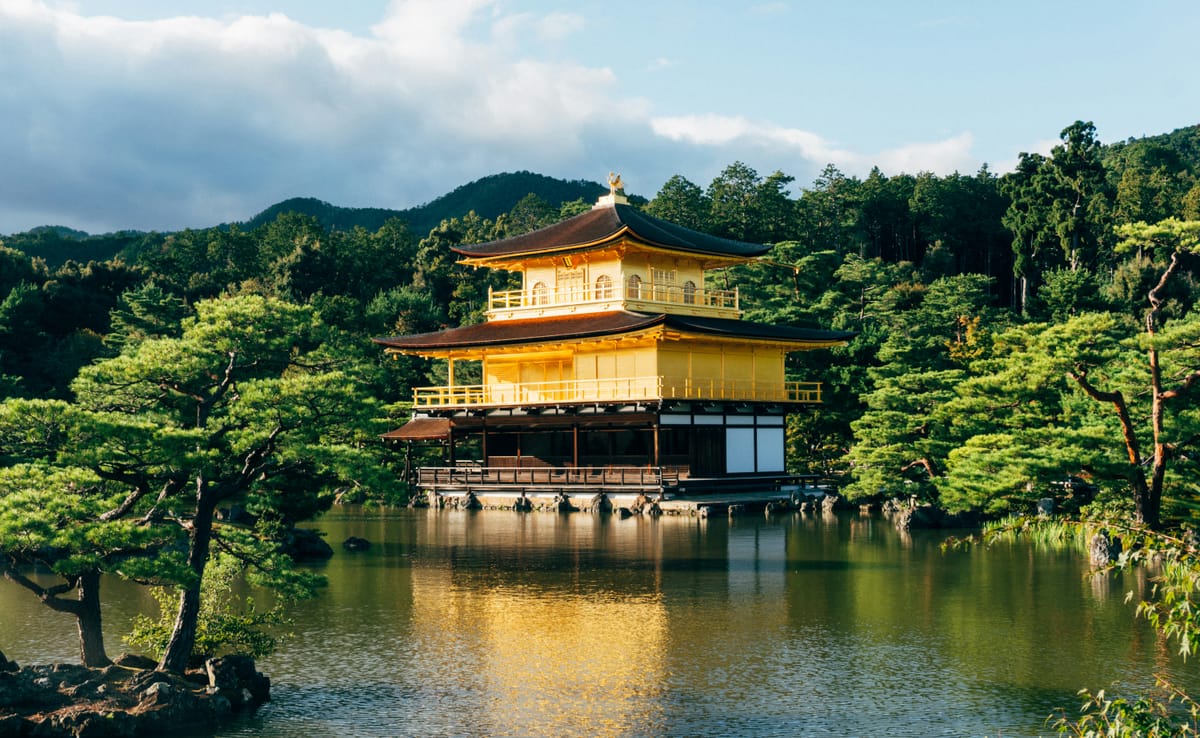
Enryaku-ji Temple on Mount Hiei
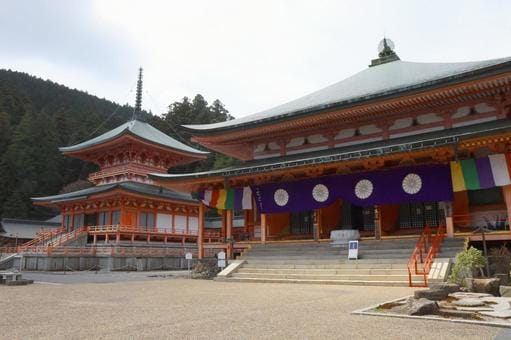
Enryaku-ji Temple, which reveres the entire Mount Hiei as sacred, is the head temple of the Tendai sect of Buddhism. It's a venerable temple opened in the early Heian period over 1000 years ago. Numerous cultural properties are scattered throughout the vast temple grounds, which can be accessed by cable car. The view of Lake Biwa below is spectacular.
Mount Hiei is also famous as a place for ascetic training, and just walking on the mountain paths makes you feel your heart tightening naturally.
For those who want to feel the depth of Kyoto, this is an attractive spot I'd definitely recommend. While access is a bit inconvenient, that means it's less crowded than other tourist spots, allowing you to spend time quietly.
Access:
Take the Keihan Line to Demachiyanagi Station, then transfer to the Eizan Electric Railway. From Yase-Hieizanguchi Station, take the cable car to the summit.
3 Areas and Spots to Feel Kyoto's Nature
Kyoto is one of Japan's most scenic areas. In addition to temples and shrines nurtured by its long history, there are many spots where you can enjoy the beauty of nature. Here are three recommended areas where you can feel Kyoto's great nature. You're sure to experience the deep charm of Kyoto in these places.
Arashiyama
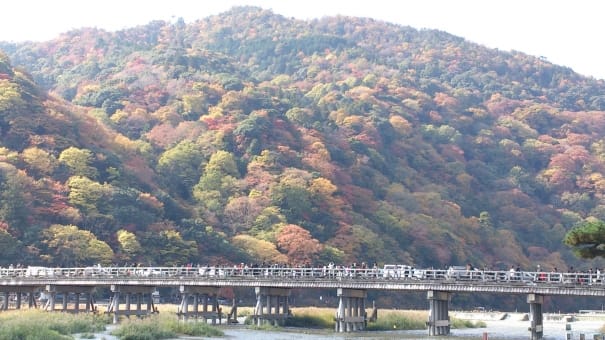
Arashiyama is one of Kyoto's representative scenic areas. It's packed with spots where you can fully enjoy natural beauty, such as the bamboo grove path and Togetsukyo Bridge. You can enjoy Arashiyama's scenery changing with the seasons, with cherry blossoms in spring and autumn leaves in fall. There are also activities that make use of nature, such as the Sagano Scenic Railway.
Arashiyama also has many temples and gardens, allowing you to feel the harmony between history and nature. Just walking through the bamboo grove path gives you a strange sense of being released from the daily hustle and bustle. It's one of the essential areas for autumn sightseeing in Kyoto.
Access:
From Kyoto Station, take the JR Sagano Line to Saga-Arashiyama Station
From the Gion area or Osaka, take the Hankyu Railway to Arashiyama Station
Although less frequently used, you can also access it from Arashiyama Station on the Keifuku Electric Railroad
Kamogawa River
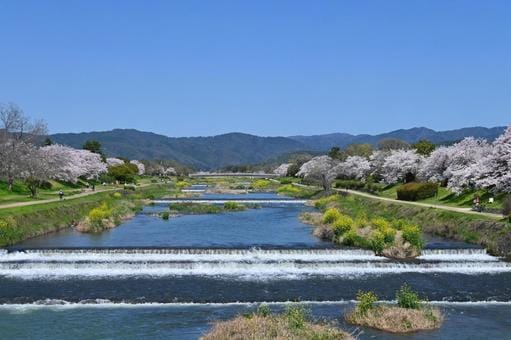
The Kamogawa River, flowing through the center of Kyoto, is a spot where you can enjoy beautiful scenery in all four seasons. It's particularly known as a cherry blossom viewing spot in spring, an d you can enjoy the feeling of hanami just by strolling along the river. In summer, riverside dining platforms called "kawayuka" are set up, where you can enjoy meals while feeling the river breeze.
However, be aware that it's quite a long river, so no matter how far you walk, you might not see the end.
I recommend the section from Sanjo Station to Gion-Shijo Station on the Keihan Line. This area is a good distance for walking and ideal for enjoying a riverside stroll. The Kamogawa Delta area near Demachiyanagi Station, where there are fewer people, is also quiet and recommended.
Access:
Right next to Gion-Shijo Station on the Keihan Line and Kawaramachi Station on the Hankyu Line
The Kamogawa River near Demachiyanagi Station on the Keihan Line is less crowded and recommended
Uji
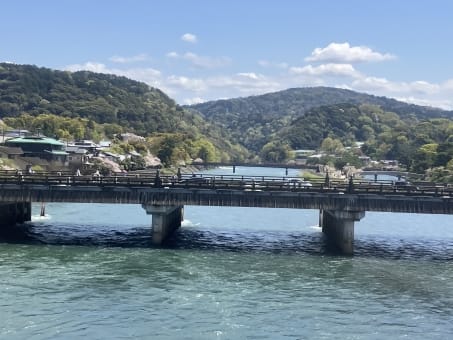
Uji, a short distance from central Kyoto, is an attractive area blessed with rich nature. It's also famous as a production area for Uji tea.
Many historic temples are scattered throughout the area, including the World Heritage site Byodoin Temple. Just strolling along the Uji River can make you forget the daily hustle and bustle, making it a healing spot.
Uji also has many famous shops for matcha sweets and foods, allowing you to enjoy an all-matcha experience.
Personally, I prefer Uji over Arashiyama because it has fewer people but still many points of interest.
Access:
From Kyoto Station, take the JR Nara Line to Uji Station
From the Gion area, take the Keihan Line to Uji Station
The two Uji stations are close to each other, so either is fine
If you are interested in Uji, check the article below! I summarized how and where you can enjoy Uji as much as possible.
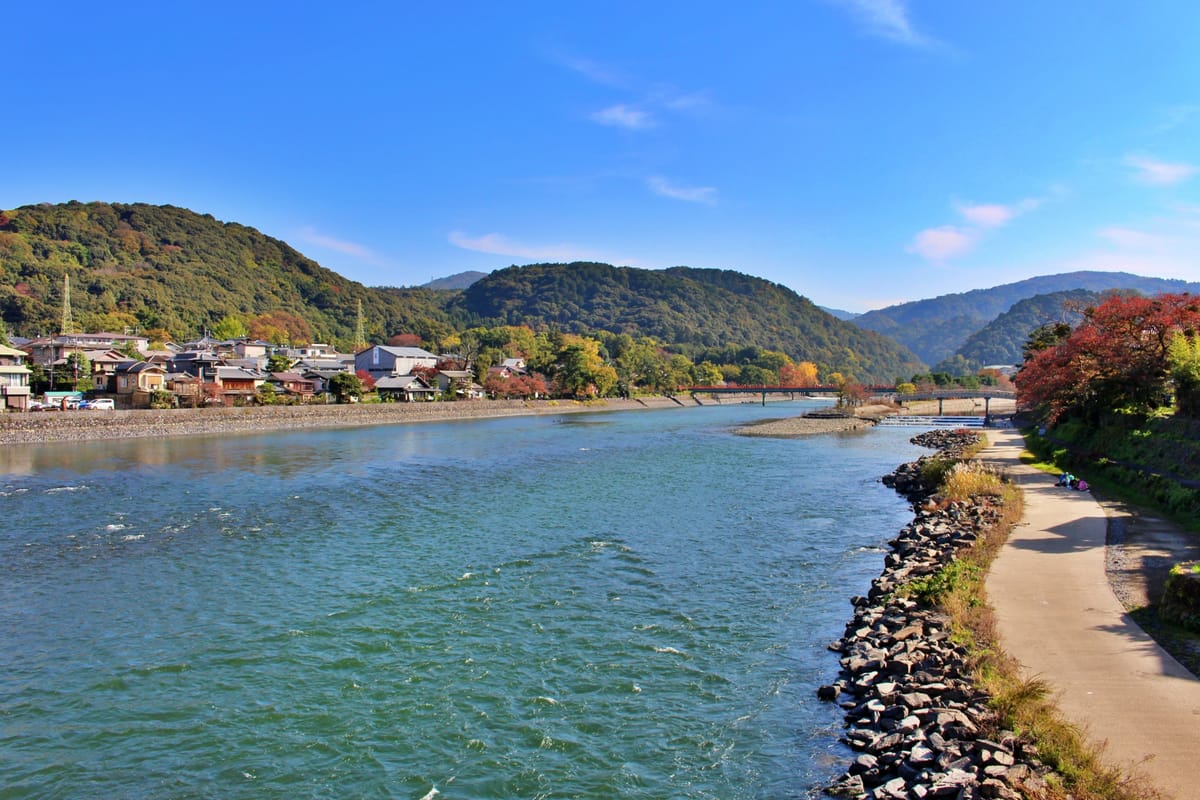
Amanohashidate
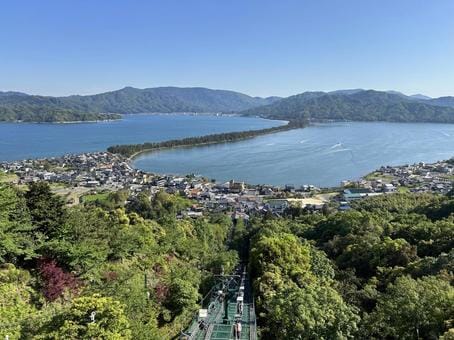
Amanohashidate, one of Japan's Three Scenic Views, is a sand bar located in Miyazu City in northern Kyoto. It got its name because it looks like a bridge descending from heaven to earth.
You can enjoy cycling across Amanohashidate or boat rides, making it perfect for immersing yourself in nature.
Although it's a bit far from central Kyoto, I recommend it for those who want to enjoy natural beauty. It's also a perfect spot for those looking for off-the-beaten-path tourist destinations.
Access:
About 2 hours by train from JR Kyoto Station
How to Enjoy Kyoto in Each Season
While Kyoto is an attractive tourist destination throughout the year, spring and autumn are especially recommended. The beauty of cherry blossoms and autumn leaves in these seasons is breathtaking.
On the other hand, summer has many festivals, and winter offers the quiet beauty of snowy landscapes, so there are ways to enjoy Kyoto in each season. Here are some tips to fully appreciate Kyoto's seasonal charms.
Spring and Autumn: The Most Recommended Seasons
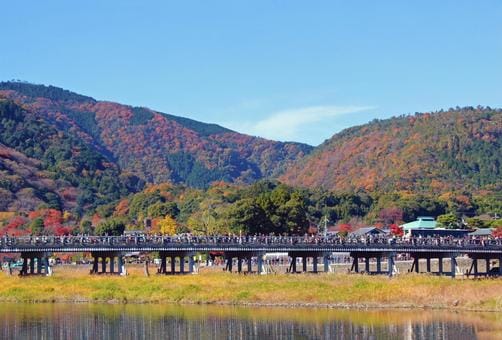
The most recommended seasons for visiting Kyoto are undoubtedly spring and autumn. The cherry blossom season from late March to mid-April and the autumn foliage season in November are when Kyoto shines the brightest.
You'll be moved by the sight of the city dyed in pale pink or vivid red. Many temples and shrines also hold illumination events, allowing you to enjoy a different, fantastical atmosphere at night.
Moreover, these seasons have comfortable weather, ideal for sightseeing. Not only cherry blossoms and autumn leaves but various seasonal flowers also show their beautiful appearances one after another.
If you want to fully experience Kyoto's charm, I highly recommend visiting during these seasons.
If you are interested in Kyoto in spring, check the article below! I summarized how and where you can enjoy Kyoto in spring as much as possible.
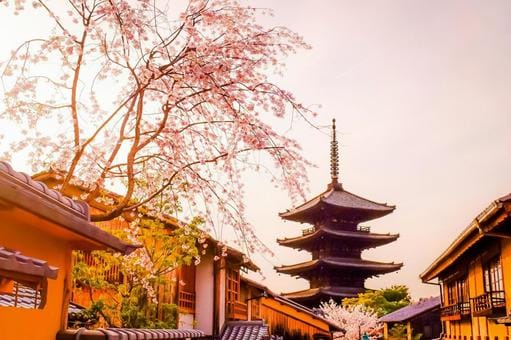
If you are interested in Kyoto in autumn, check the article below! I summarized how and where you can enjoy Kyoto in autumn as much as possible.
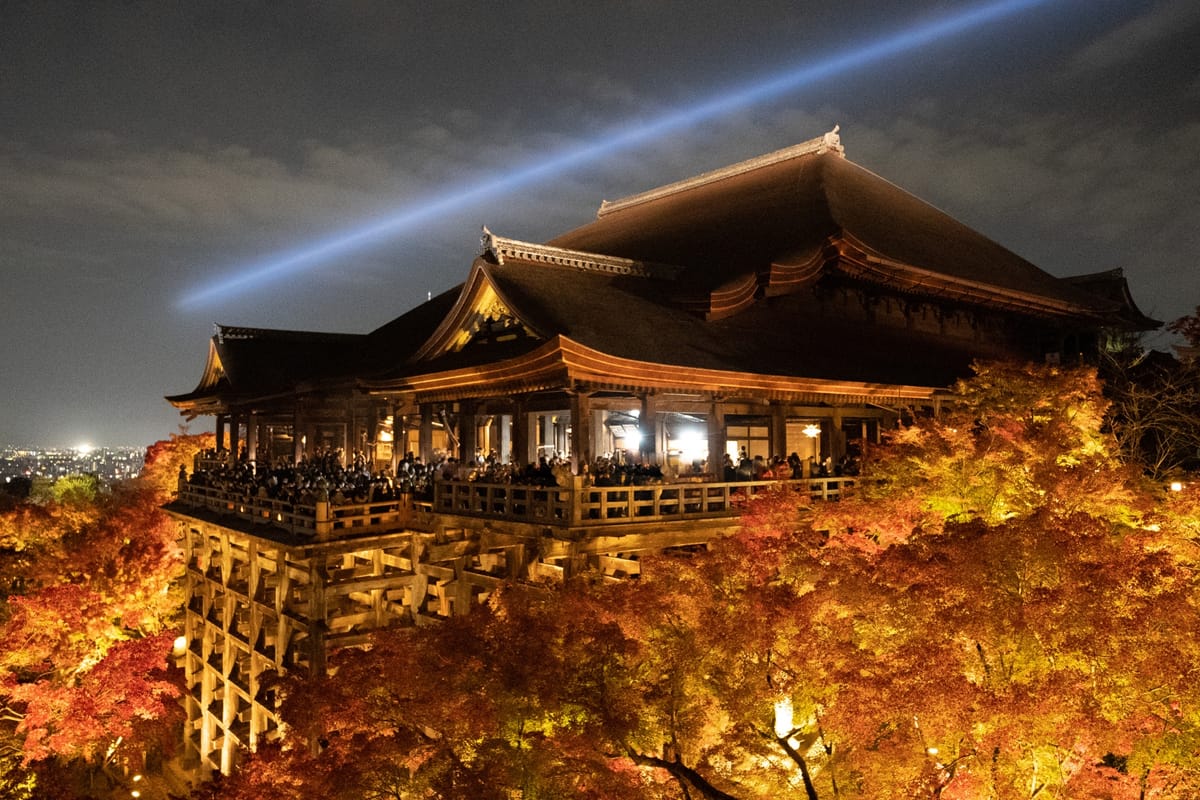
Summer
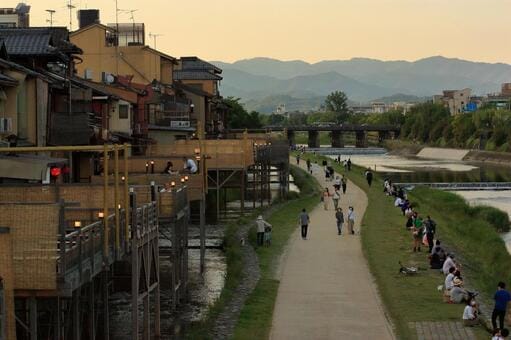
Summer in Kyoto is the festival season, starting with the Gion Festival in July. The whole city is filled with excitement, and it's quite a spectacle. Night illuminations and fireworks displays are among the many summer attractions.
However, high humidity is a characteristic of Kyoto's summer. Sightseeing during the day carries a risk of heat stroke, so it's important to stay hydrated and take frequent breaks. I recommend using the cooler early morning or evening hours.
If you are interested in Kyoto in summer, check the article below! I summarized how and where you can enjoy Kyoto in summer as much as possible.
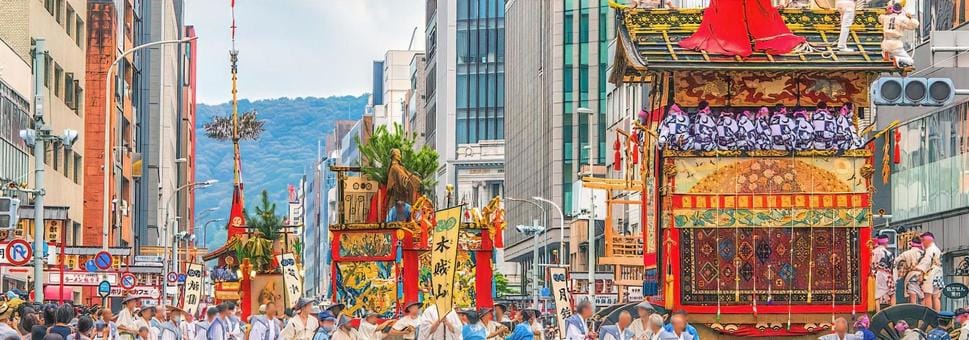
Winter
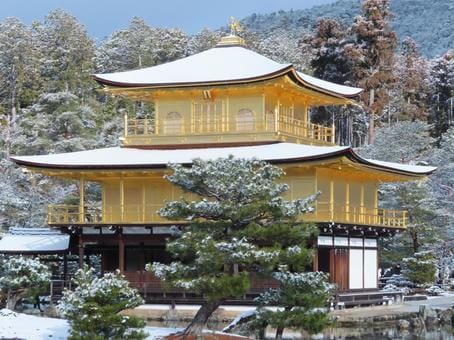
While winters in Kyoto can be harsh, the sight of snow-covered temples and shrines and the quiet appearance of Arashiyama are moving.
There are fewer people, so you can leisurely enjoy Kyoto's scenery. Many New Year's events and hatsumode (first shrine visit of the year) take place, enveloping the city in a solemn atmosphere.
If you've visited Kyoto multiple times in other seasons, I encourage you to try experiencing Kyoto in winter as well.
If you are interested in Kyoto in winter, check the article below! I summarized how and where you can enjoy Kyoto in winter as much as possible.
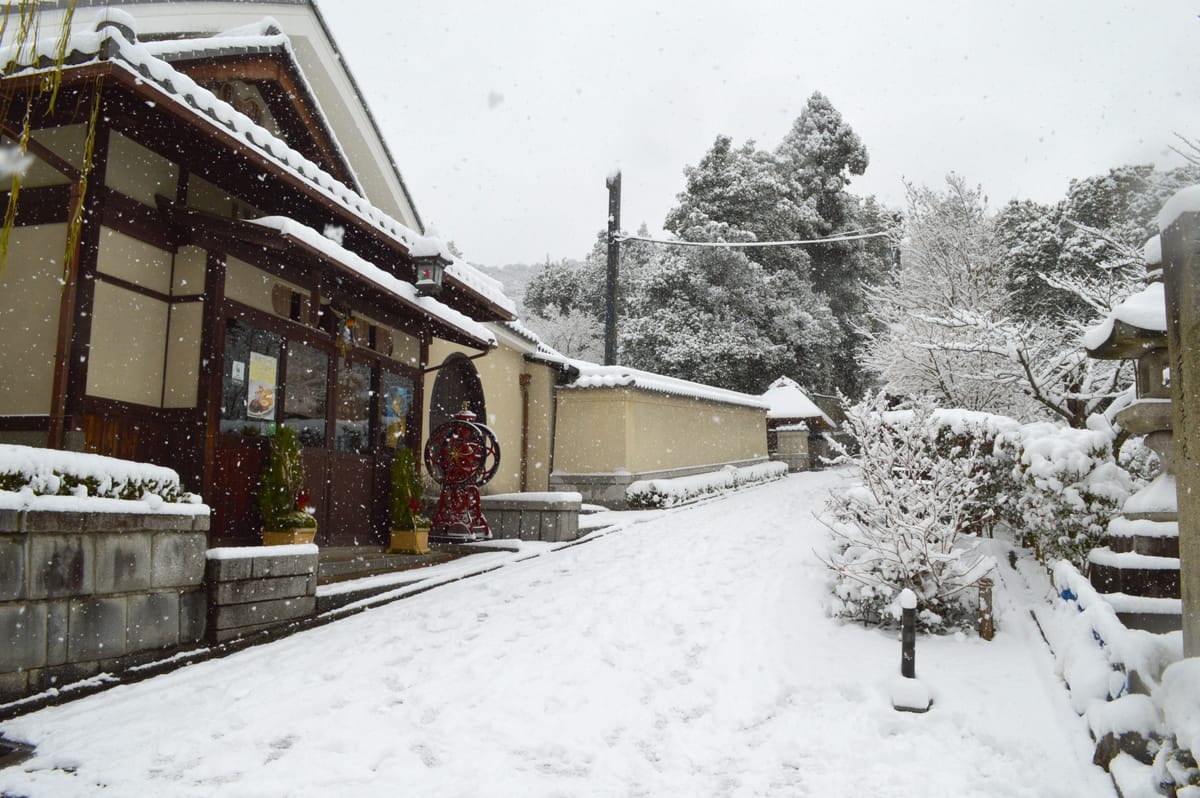
About Kyoto's Food Culture
Kyoto has long been at the forefront of Japanese food culture. The traditional culinary charm, unchanged from past to present, continues to captivate visitors to Kyoto.
Here, I'll introduce the characteristics of Kyoto's unique food culture and recommend some famous local dishes.
Obanzai
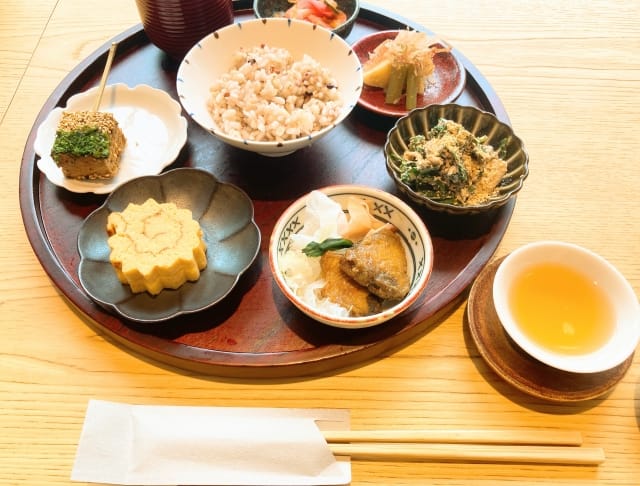
Obanzai refers to Kyoto's home-style cooking. It's characterized by small dishes that are visually beautiful and simply prepared using seasonal ingredients. The basic menu style is ichiju-sansai (one soup and three side dishes), which has been enjoyed as a balanced and healthy meal.
Its simple and light flavors seem to reflect the delicate palate of Kyoto people. While individual dishes are small, this allows you to enjoy a variety of tastes.
Some restaurants offer "all-you-can-eat obanzai," which I recommend for trying various types.
Kyo Ryouri (Kyoto Cuisine)
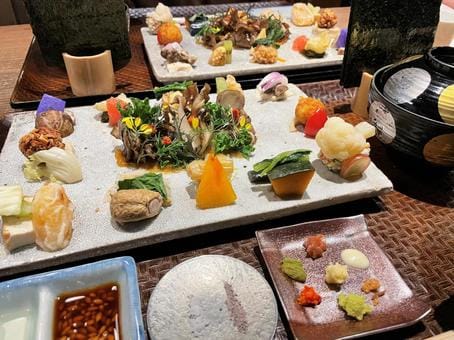
Unlike obanzai, Kyo Ryouri (Kyoto cuisine) refers to dishes eaten on special occasions. It's characterized by delicate presentation and refined flavors that make the most of seasonal ingredients, and is served at high-end restaurants like ryotei and kappo.
Not only is the visual beauty impressive, but the attention to dishware is also a big part of Kyoto cuisine's charm. You can feel the chef's aesthetic sense and seasonal awareness throughout, resulting in what could be called an artistic creation. It's almost too beautiful to eat.
While it's expensive and often difficult to make reservations, it's sure to be a special experience that will remain a lifelong memory.
Traditional Sweets
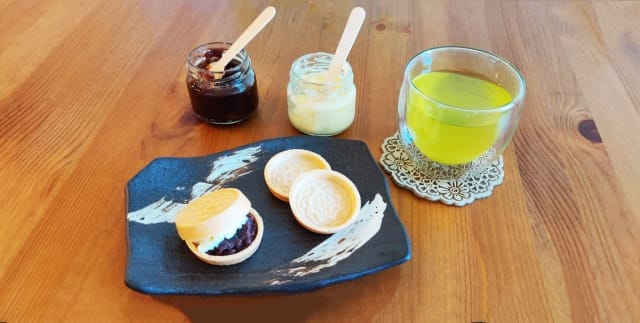
Kyoto is also a treasure trove of Japanese sweets. Particularly representative are the various creative Japanese sweets using matcha. Characterized by their delicate colors and refined sweetness, they're perfect for enjoying with tea.
The lineup ranges from traditional fresh sweets to Western-style desserts using matcha, such as ice cream and parfaits, offering a wide variety.
These delicate Japanese sweets that can only be tasted in Kyoto - I hope you find your favorite.
If you are interested in Kyoto traditional foods & sweets, check the article below! I summarized Kyoto traditional foods & sweets I recommend and how I felt each of them.
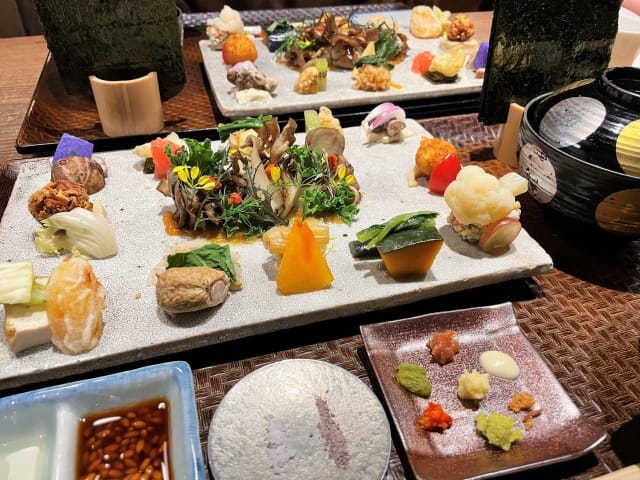
Ramen
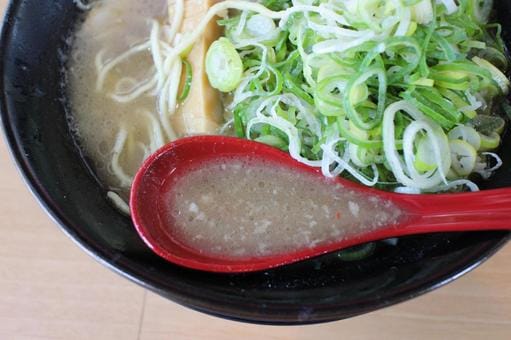
It might be surprising, but Kyoto is also known as one of Japan's fiercest battlegrounds for ramen. The reason is that Kyoto is a "student city" with many universities, so there are many ramen shops that offer affordable meals.
Especially in an area called Ichijoji, there are more than 10 different ramen shops around the station. If you're a ramen lover, I definitely recommend visiting.
If you are interested in Ichijoji, check the article below! I summarized how and where you can enjoy Ichijoji as much as possible.
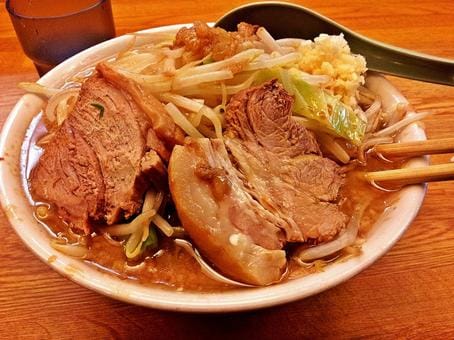
If you are interested in best ramen shops in Kyoto, check the article below! I summarized best ramen shops in Kyoto I recommend and how I felt each of them.
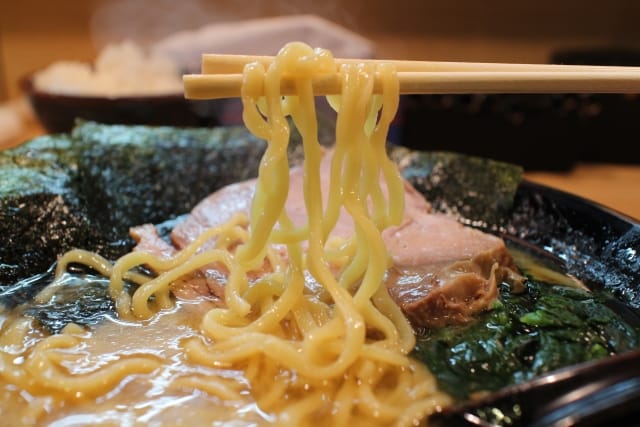
Recommended Souvenir Shops in Kyoto
One of the joys of traveling to Kyoto is choosing souvenirs. From traditional Japanese sweets to traditional crafts, Kyoto has many attractive souvenirs.
But you might be wondering where to buy what. Here, I'll introduce some recommended souvenir shops based on my experience living in Kyoto.
The key point in choosing Kyoto souvenirs is to select items that feel "Kyoto-like." Whether it's Japanese sweets that allow you to taste flavors from long-established shops, or traditional craft chopsticks, choosing something you can only get in Kyoto will surely be appreciated.
However, be careful about the expiration dates of Japanese sweets. I recommend choosing items with longer shelf lives after consulting with the shop staff. I also made mistakes in souvenir selection during my student days. Many sweets have surprisingly short expiration dates, so make sure to check carefully.
Ryokujuan Shimizu
Source: Tabelog by Cafe Moca Otoko
Ryokujuan Shimizu is known as a long-established shop specializing in konpeito (sugar candy). Konpeito is a traditional candy where sugar is hardened into cute shapes.
This is not only Kyoto's but Japan's only shop specializing in konpeito. It boasts over 170 years of history.
I especially recommend their seasonal flavors. The delicate tastes inspired by Kyoto's seasonal landscapes, such as cherry blossoms, are exceptional.
They also have a long shelf life, making them perfect as souvenirs for overseas. Although it's a bit far from Kyoto Station, I recommend visiting the main store. It's sure to be a souvenir that captures the essence of Kyoto.
<Store Information>
Address: 38-2 Yoshidaizumidonocho, Sakyo Ward, Kyoto, 606-8301
Closed: Wednesdays
Phone: 075-771-0755
Hours: 10 AM–5 PM
Website
Tawaraya Yoshitomi
Source: Tabelog by miyu5678
Tawaraya Yoshitomi, with over 300 years of history, is a long-established Japanese confectionery shop representing Kyoto. They sell many types of traditional sweets.
While the map below shows the main store, you can also purchase their products at department stores in Kyoto. They have a wide range of sweets with long shelf lives, so you'll want to buy a lot to take home. It's the perfect shop to conclude your Kyoto sightseeing.
Kitchen Yuzen
Source: Google Map by Stephan Wagener
Kitchen Yuzen is located in Nishiki Market, known as Kyoto's kitchen. It's a shop that sells Kyoto-specific tableware and kitchen items, with an impressive variety of chopsticks in particular.
Chopsticks, which are also traditional Japanese crafts, become more comfortable to use over time and grow on you.
Whether you're choosing for yourself or as a gift, you're sure to find a favorite pair. The wide variety of designs, from stylish ones to high-end chopsticks handmade by craftsmen one by one, is enjoyable just to look at.
<Store Information>
Address: Nakauoyacho, Nakagyo Ward, Kyoto, 604-8125
Closed: None
Phone: 075-212-3390
Hours: 10 AM–6 PM
Website
If you are interested in Kyoto best sweets & snacks, check the article below! I summarized Kyoto best sweets & snacks I recommend and how I felt each of them.
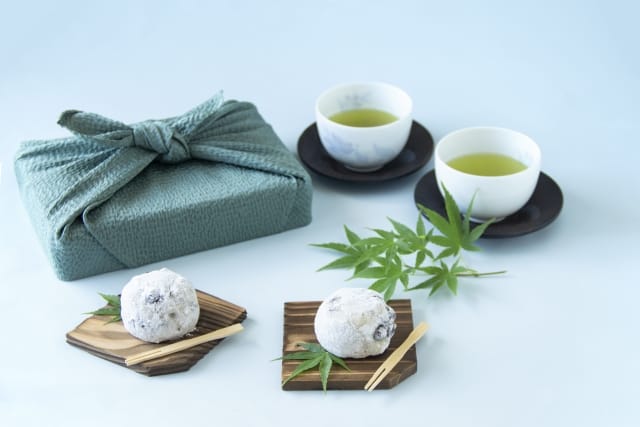
Tours to Fully Enjoy Kyoto
Kyoto has many attractive tourist spots, but it can be confusing to know how to tour them if you're visiting for the first time.
That's when I recommend using a tour. With professional guides, you can efficiently experience Kyoto's charms. Here, I'll introduce some recommended tours where you can enjoy Kyoto's history, food, and nature.
Tours to Experience Kyoto's History
Kyoto is known as an ancient capital, and its cultural heritage nurtured by its long history is full of attractions. But you probably want to experience more than just sightseeing and feel the depth of Kyoto's history. For those who feel this way, I recommend the following two tours.
"Fushimi Inari Hidden Hiking Tour" by Magical Trip

The thousand torii gates of Fushimi Inari Shrine are a must-see spot in Kyoto. But how about exploring a hidden hiking course that only locals know, instead of just the tourist-packed main approach?
This is our original Magical Trip tour, which has been ranked 3rd among experience tours in Japan on TripAdvisor.
Spend 3 hours exploring deep into Fushimi Inari with a guide. You're sure to experience a tranquility and mystical atmosphere that you can't taste on the main approach. It's also attractive that it's reasonably priced at about 58 USD per person. This tour allows you to discover a new side of Fushimi Inari.
Click here for more details: Fushimi Inari Hidden Hiking Tour
"10 Must-see Spots in Kyoto One Day Private Tour" by EE tour
Source: EE tour
For those who want to conquer Kyoto's main attractions in one day, I recommend this tour. You'll visit Kyoto's representative tourist spots like Kinkaku-ji, Arashiyama, and Gion over 8 hours. The point is that it comes with a private guide, so you can enjoy sightseeing at your own pace.
The price starts from 317 USD, and up to three people can participate for the same price. For groups of four or more, there's an additional fee. While you'll need to cover actual expenses like taxi fares separately, this tour is recommended for those who want to efficiently enjoy Kyoto during a short stay. You're sure to have a fulfilling day experiencing Kyoto's history and charm.
Click here for more details: 10 Must-see Spots in Kyoto One Day Private Tour
If you are interested in walking tours in Kyoto, check the article below! I summarized walking tours in Kyoto I recommend and how I felt each of them.
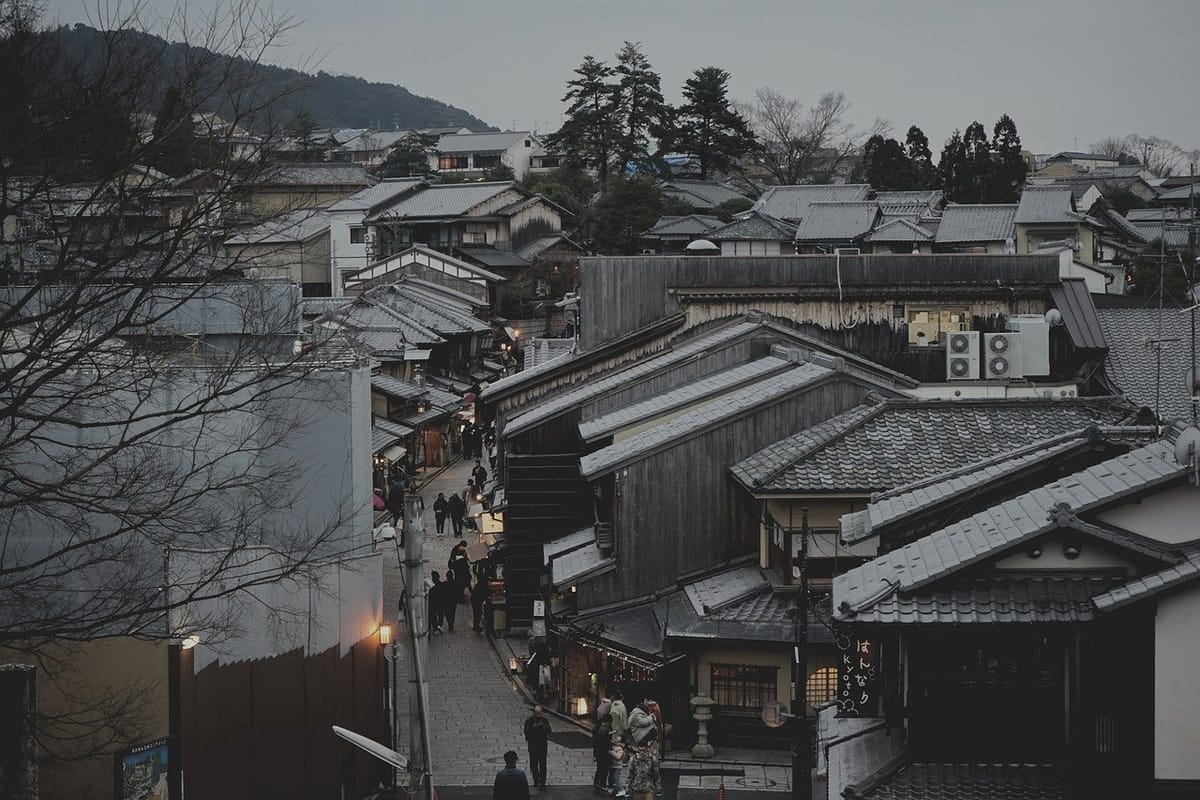
Tours to Enjoy Kyoto's Food
Kyoto is a treasure trove of gourmet food. But it can be challenging for tourists to enter some famous restaurants. In such cases, why not use a tour to fully enjoy Kyoto's cuisine? Here are two recommended tours where you can fully experience Kyoto's food culture.
"Kyoto Night Foodie Tour" by Magical Trip
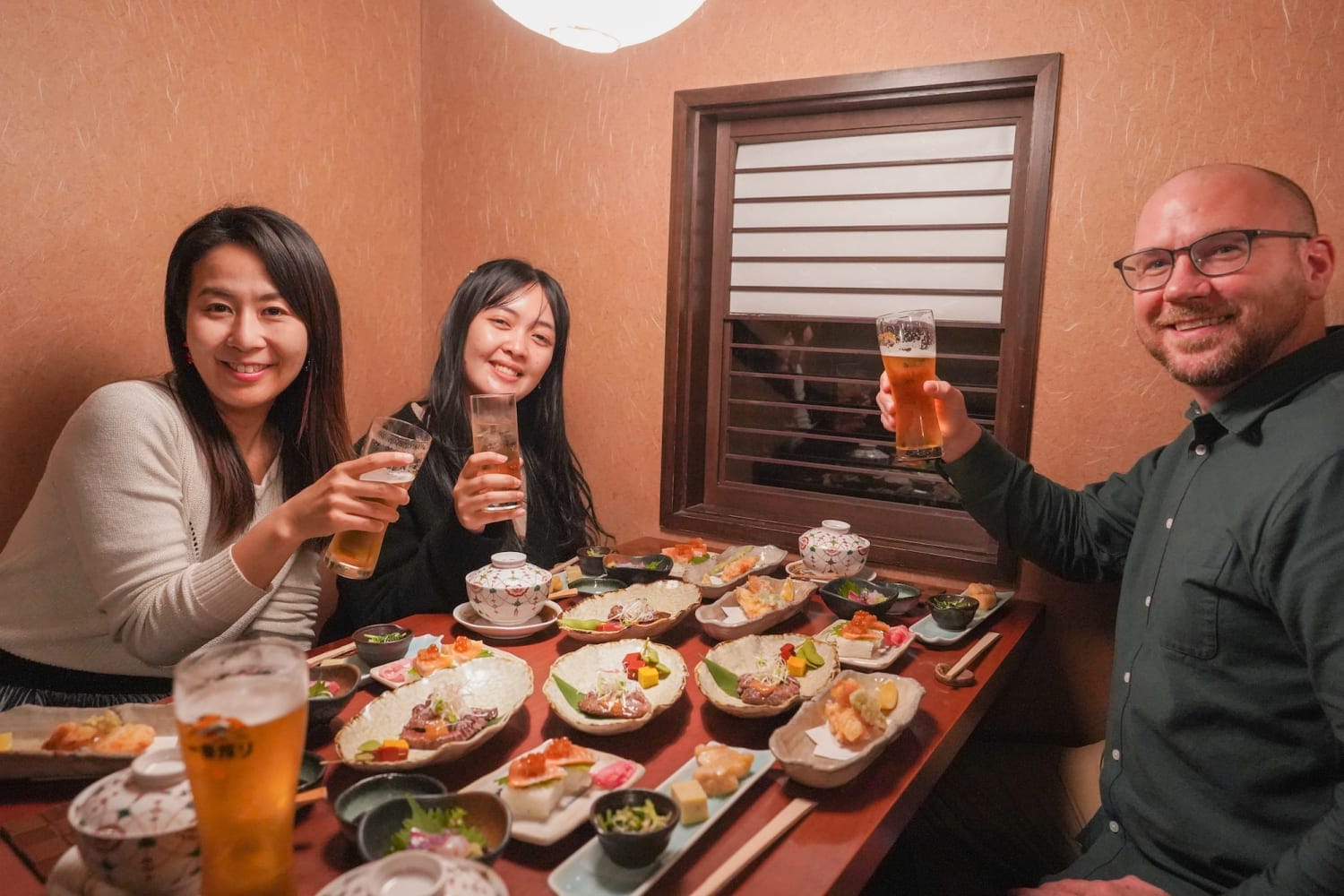
This is our popular Magical Trip tour that takes you through Kyoto's representative gourmet areas like Gion and Pontocho. It's no wonder this tour ranked 14th globally on TripAdvisor. It's a roughly 3-hour course where you hop between deep local eateries with a guide.
The charm is that you can enjoy not only Kyoto cuisine but also taste the common people's flavors of Kyoto like obanzai. You can enter shops that are difficult for foreign tourists to access, so you can have a very local experience. The price is about 133 USD per person, including meals. I recommend this tour for those who want to fully enjoy Kyoto's nights.
Click here for more details: Kyoto Night Foodie Tour
If you are interested in night tours in Kyoto, check the article below! I summarized night tours in Kyoto I recommend and how I felt each of them.
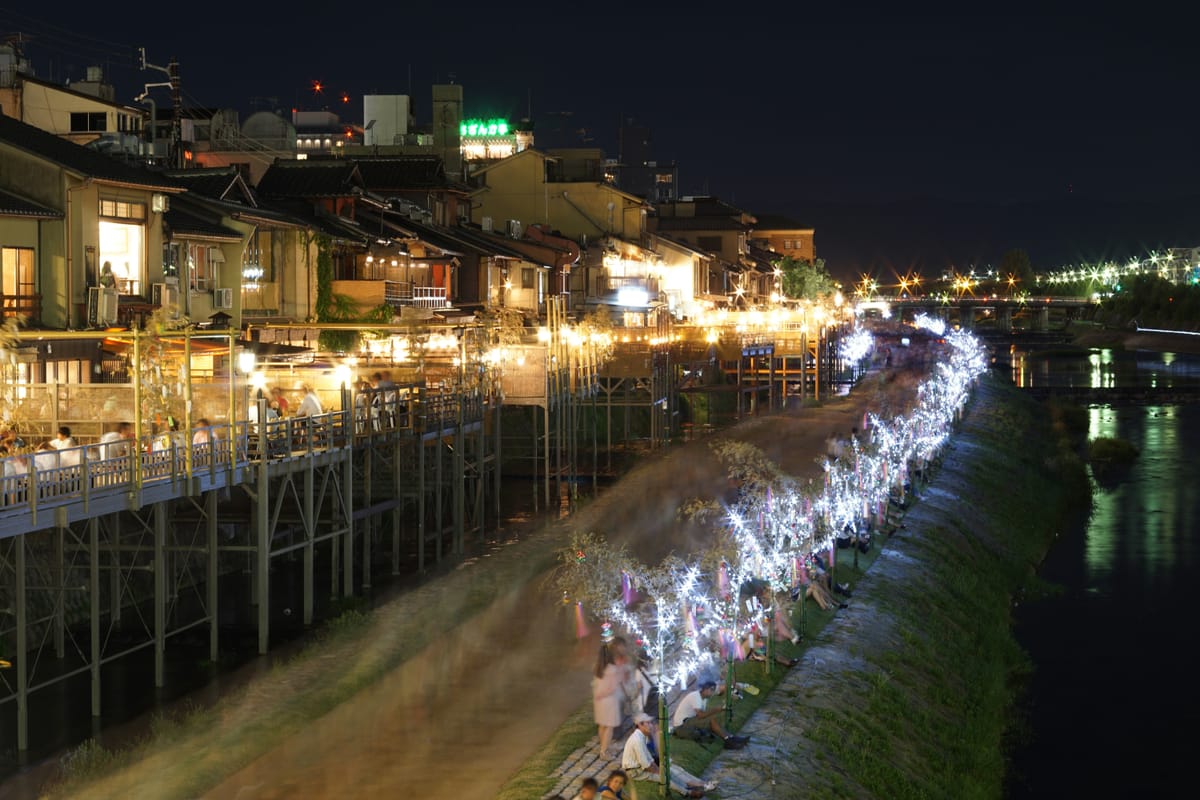
"Nishiki Market Brunch Walking Food Tour" by Magical Trip
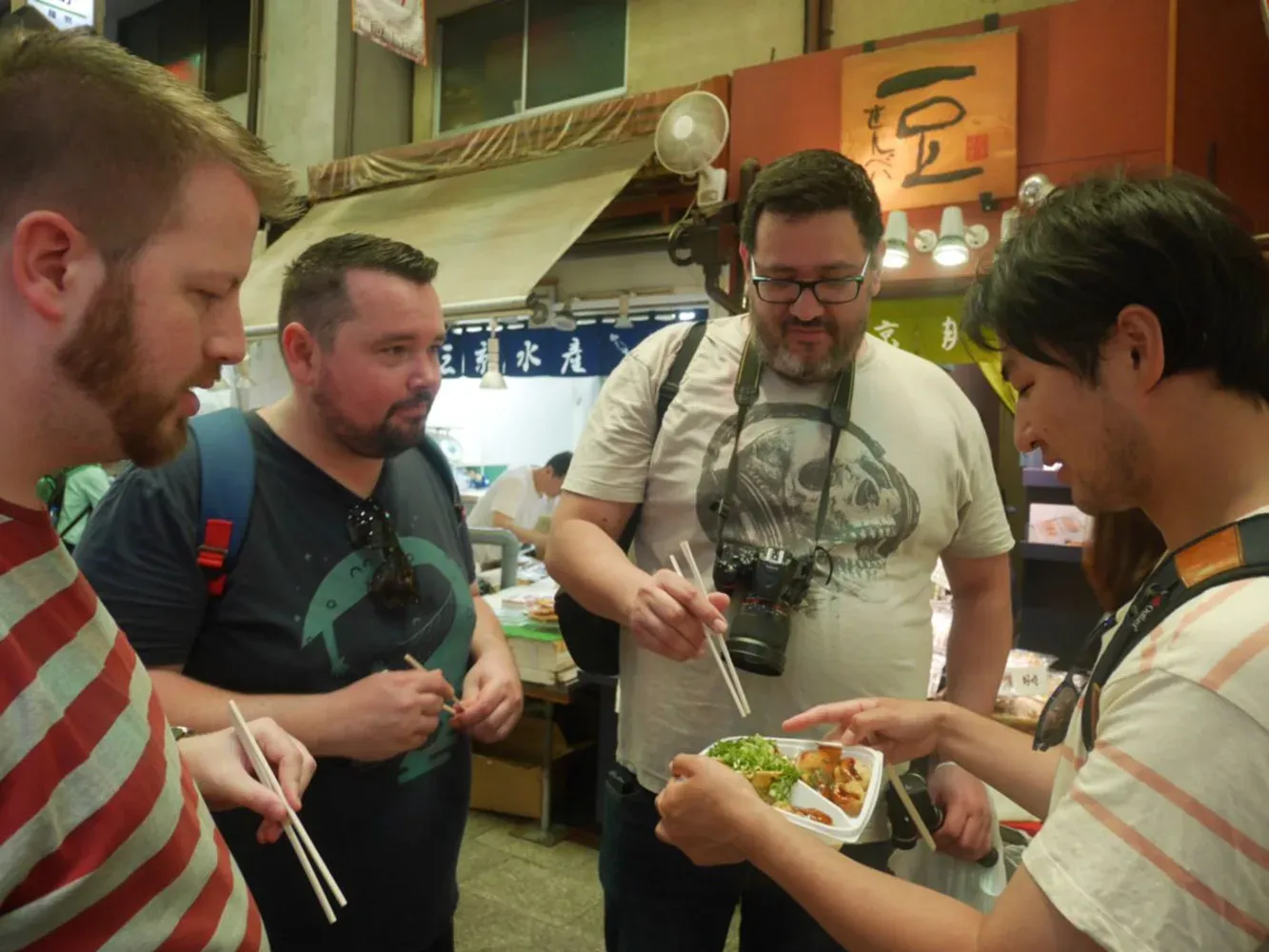
This is another Magical Trip tour where you can fully enjoy eating your way through Nishiki Market in the morning. After strolling through the Gion area, you head to Nishiki Market. It's popular because you can fully experience Kyoto's food culture in about 3 hours, and it's a great value at about 45 USD, including brunch at a restaurant in the market.
Nishiki Market is called Kyoto's kitchen, and it's a popular spot where fresh ingredients and Kyoto-specific foods are packed tightly together. The highlight is being able to touch the everyday food culture of local people. It's a tour where you can enjoy food hopping while experiencing the daily life of Kyoto.
Click here for more details: Nishiki Market Brunch Walking Food Tour
If you are interested in food tours in Kyoto, check the article below! I summarized food tours in Kyoto I recommend and how I felt each of them.

Tours to Enjoy Kyoto's Nature
While Kyoto allows you to feel the atmosphere of an ancient capital, another big charm is the peaceful nature that spreads out when you leave the city center.
I've picked out two tours where you can fully enjoy Kyoto's rich nature. Both offer experiences that are a bit different from typical Kyoto sightseeing.
"Kyoto Arashiyama Bamboo Forest & Garden Half-Day Walking Tour" by Magical Trip
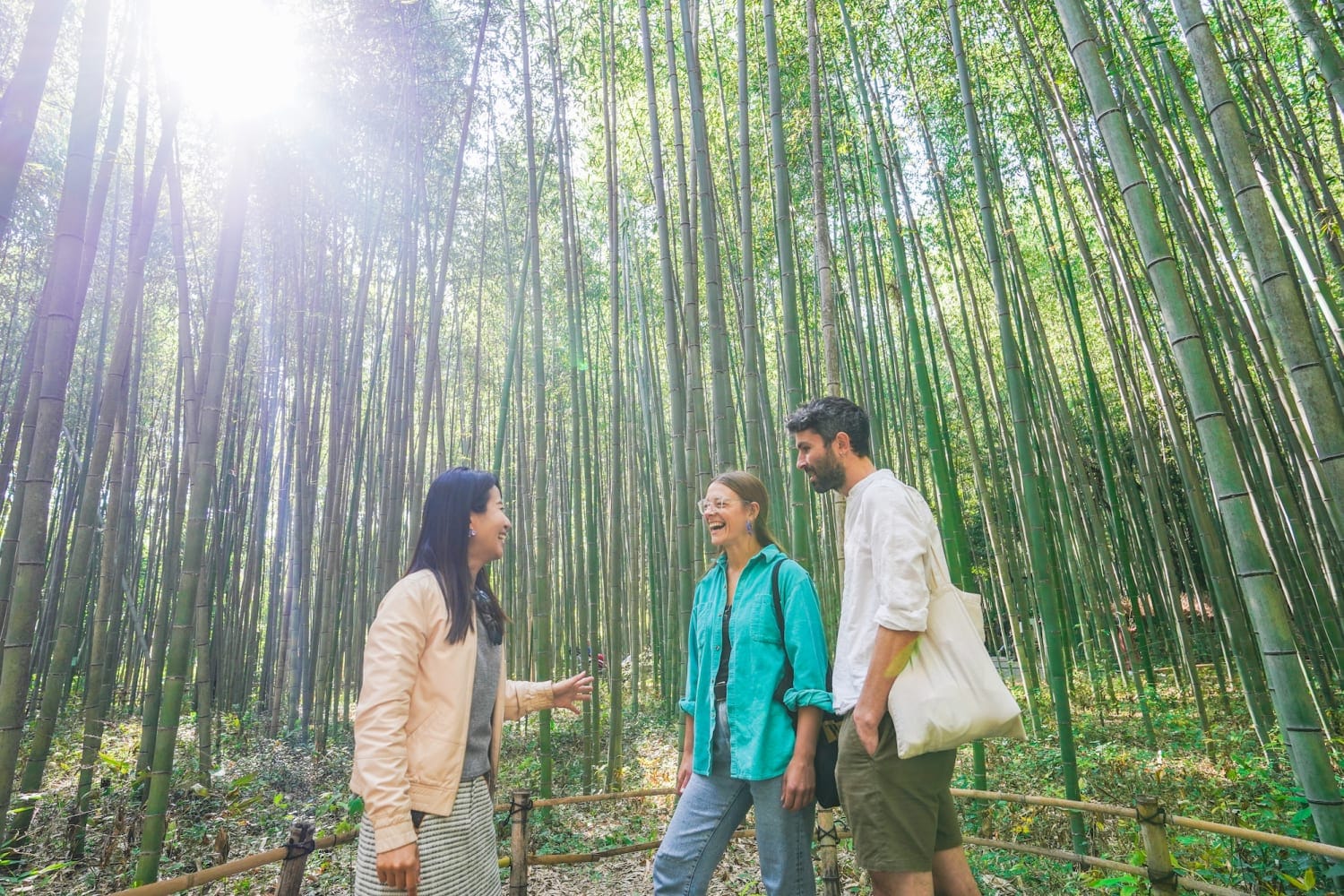
This is a Magical Trip tour where you can fully enjoy the nature of the Arashiyama area. You'll spend half a day visiting Arashiyama's representative sights like the bamboo grove path and Tenryu-ji Temple.
The view from the famous Togetsukyo Bridge is spectacular, and you can enjoy scenery that changes with the seasons.
The charm point is that you can enjoy both nature and food, as lunch includes dishes like obanzai and Kyoto cuisine.
You can slowly immerse yourself in Arashiyama's charm while listening to the guide's explanations. The price is reasonably priced at about 105 USD per person, including lunch. Why not experience this along with your Arashiyama sightseeing?
Click here for more details: Kyoto Arashiyama Bamboo Forest & Garden Half-Day Walking Tour
"Kyoto Matcha Green Tea Tour" by Arigato Travel
Source: Arigato Travel official website
This tour visits Uji, known as a production area for matcha. After visiting the World Heritage site Byodoin Temple, you'll tour long-established tea shops.
It's about 3 hours full of matcha experiences, including matcha preparation and tasting. It's a highly rated tour where you can experience the unique atmosphere of Uji.
The price is a bit high at about 240 USD per person, but it's understandable considering that lunch is included. You're sure to have a luxurious experience touching the depth of Japanese culture while being healed by Uji's nature.
I recommend this for those who want to fully enjoy the charm of Uji, Kyoto's hidden gem.
Click here for more details: Kyoto Matcha Green Tea Tour
The benefits of joining a tour for Kyoto sightseeing are efficiency and the ability to hear expert explanations. Tours are recommended to know Kyoto's charm more deeply within limited stay time.
As you can see, there are many tours focusing on themes like Kyoto's history, food, and nature, so why not choose one based on your interests?
Tips for Kyoto Sightseeing
Here are some tips to make your Kyoto trip more comfortable and enjoyable.
These tips are full of insights I learned from my actual experience living in Kyoto, not just information about tourist spots, but also about transportation, clothing, money preparation, and more. Please refer to them.
Minimize Bus Travel
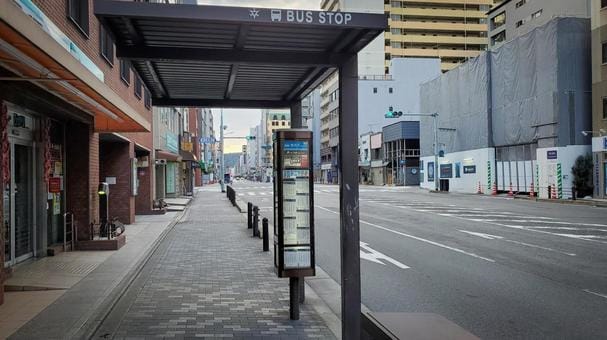
While Kyoto's city buses are very convenient, the downside is that they are extremely crowded. Especially during tourist seasons, it's not uncommon to see long lines at bus stops.
Often, you might not be able to board even after waiting for one or two buses. It would be a waste to spend your precious sightseeing time waiting for buses.
I recommend using the subway, trains, or walking as much as possible. Especially in central Kyoto where attractions are concentrated, walking is the most efficient way to get around.
If you move with plenty of time, you might make unexpected discoveries. If you do use buses, aim for relatively uncrowded times like early morning or night.
Store Luggage in Coin Lockers or at Your Hotel

Kyoto sightseeing involves a lot of walking, so light clothing is best. Having a lot of luggage inevitably makes it harder to move around.
Especially in areas with many stone-paved slopes like Kiyomizu-dera, walking becomes a struggle with luggage. It's also inconvenient when moving through narrow alleys like Pontocho.
This is where coin lockers and hotel luggage services come in handy. There are many coin lockers available at major stations like Kyoto Station, Gion-Shijo Station, and Kawaramachi Station.
If it's before check-in, I also recommend leaving your luggage at the hotel. Becoming lighter makes sightseeing more comfortable.
Be Careful of Summer Heat
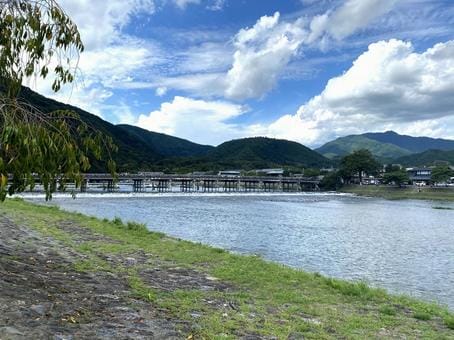
Kyoto is located in a basin, so it's characterized by drastic weather changes. In summer, you might encounter fierce heat, and in winter, bone-chilling cold.
While you can cope with winter by wearing a jacket, the summer heat is said to be "dangerous." If you visit Kyoto in summer, please explore with a change of clothes and plenty of water.
Entering Temples is Often Paid
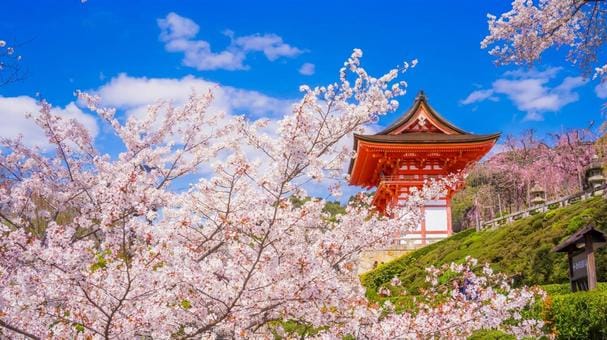
While Kyoto has many temples and shrines, an interesting difference is that entering temples is often paid, while shrines are mostly free.
Shrines originally also served as community centers for the area, so they allow free entry for many people to gather easily. However, special gardens or museums within shrines may be paid.
On the other hand, temples also serve as places for ascetic training, and because they require a lot of money to operate, they have a history of collecting money from believers.
Therefore, even now, entering a temple often requires a fee of 500-1,000 yen, and many only accept cash. So when visiting temples, prepare cash.
Kyoto is a special place like no other, filled with charm nurtured by a thousand years of history. From historical buildings represented by World Heritage sites to the beauty of nature changing with the seasons, and unique food culture - everything is profound, and you can make new discoveries no matter how many times you visit.
But the real charm of Kyoto that I felt while living there is in the daily lives and ways of thinking of the people who live there. While flexibly incorporating new things, they continue to preserve old traditions. Strolling through Kyoto's streets makes you feel this as well.
After reading this guide, please experience Kyoto's charm for yourself!
If you are interested in best tours in Kyoto, check the article below! I summarized best tours in Kyoto I recommend and how I felt each of them.
